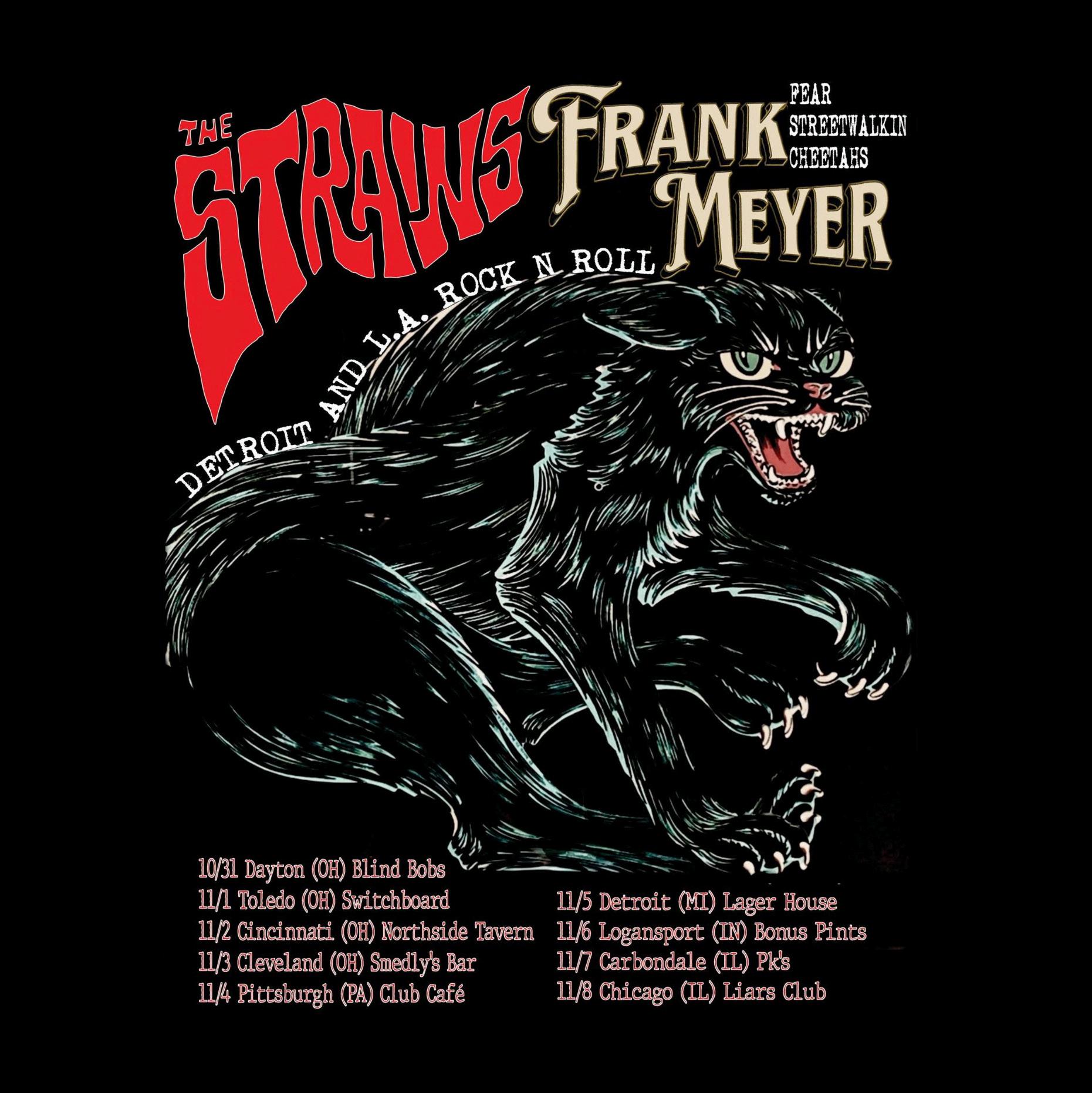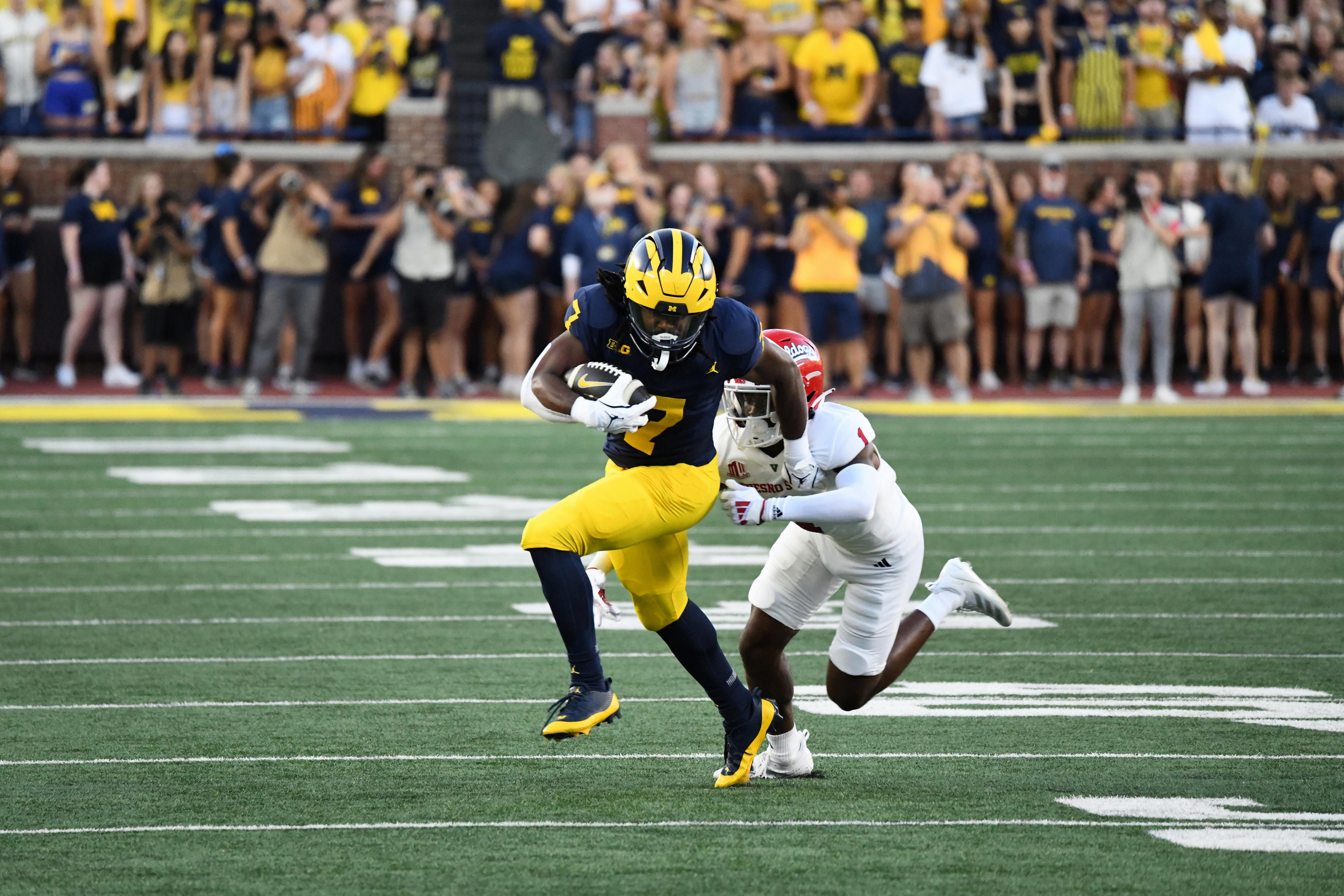

STOKE STOKE Magazine
JILLIAN WATERMAN — JILLIAN WATERMAN —
BLISS POLO BLISS POLO


“DESIGN WAS AN ACCIDENT.THE MESSAGE WASN’T.
“DESIGN WAS AN ACCIDENT.THE MESSAGE WASN’T.
JILLIAN WATERMAN’S ART MOVES THROUGH DIMENSIONS”
JILLIAN WATERMAN’S MOVES THROUGH DIMENSIONS”
“TUCKED IN THE TREES, BORN FROM THE DIRT — BLISS POLO IS MICHIGAN’S FIELD OF DREAMS”
“TUCKED IN THE TREES, BORN FROM THE DIRT — BLISS POLO IS MICHIGAN’S OF DREAMS”
“HEALING THROUGH BOARD SPORTS — AMANDA WESTRA ON CULTURE, COURAGE, AND RIDING FOR SOMETHING DEEPER”
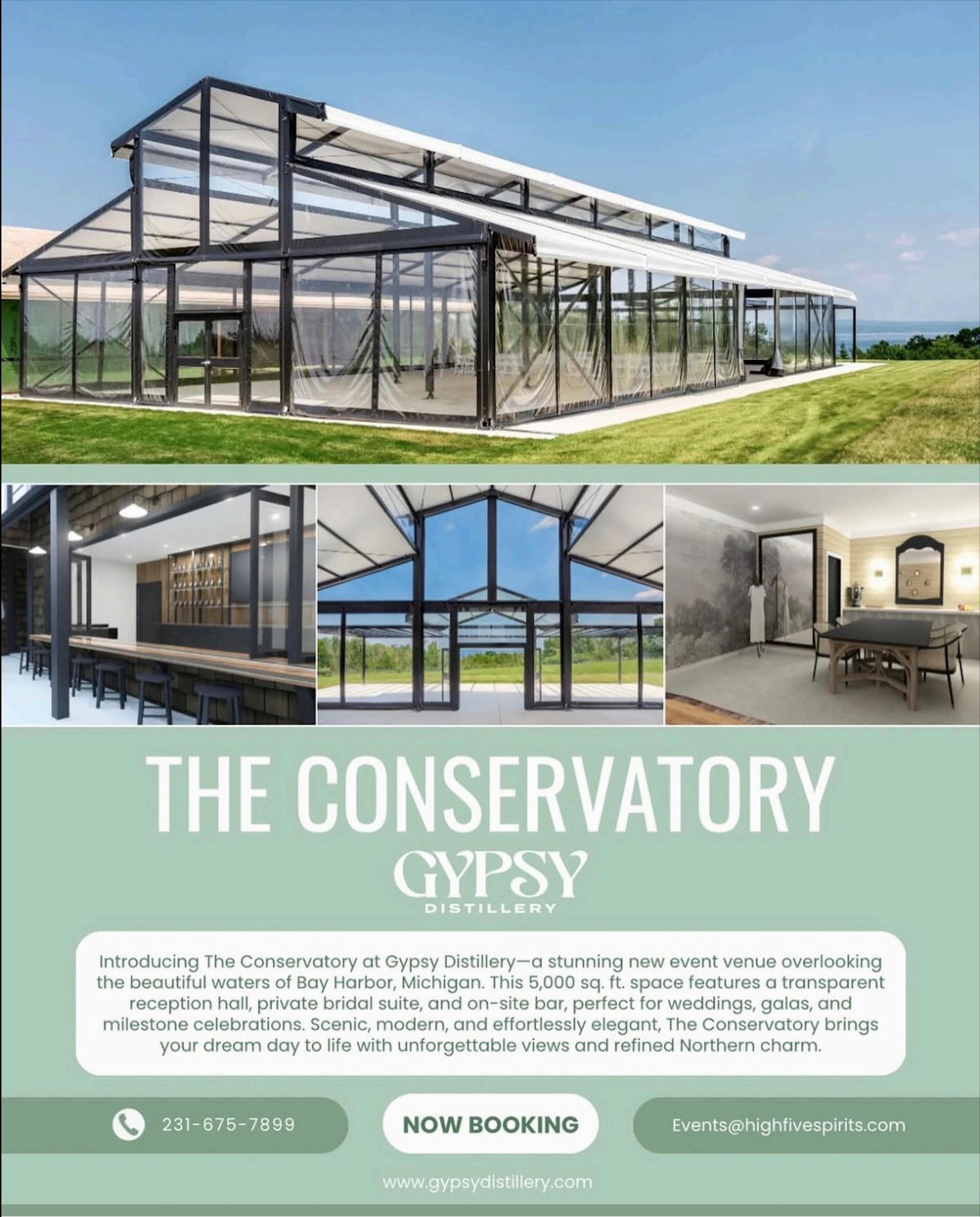
1. What She Knows
Jillian Waterman opens up about life, motherhood, survival, and creativity A deep dive into her world of cultural storytelling through fashion, birchbark, and hide
2. This Is What Resistance Looks Like
Amanda Westra is blazing trails through snow and skate With the Chill Foundation, she’s reshaping the path for Indigenous youth across Michigan lifting them up with art, mentorship, and the power of the board
3. Echoes of Thunder
Up in Bliss, perched over Sturgeon Bay, Bliss Polo lives on with power and purpose Mason Lampton and Mason Jr are keeping the hooves pounding and the tradition strong This is thunder on grass, and it’s shaking the Northwoods.
4. The Lake Effect
Tim Michael and the Lake Effect Rally Team are tearing up backroads and bringing rallycross energy to Michigan’s motorsports scene Passion meets horsepower in the frozen forests and gravel veins of the north
5. Welcome to the Pig Pen: Al King
Philip interviews founding Pig Pen member Al King drummer, rider, and all-around snow scene heartbeat A talk about vision, style, and how Michigan’s riders get creative when the terrain doesn’t play nice No peaks, no problem
6.
The story starts here Lorenzo’s Journey in Detroit A great-grandfather’s fight to stand tall in a city that demanded everything
7. The Drop
Jennifer Hudson is the founder, CEO, and creative heart behind Sounds of the Zoo Yorg curates another volume of noise from the underground. From basement shows to lakefront beats if it’s moving Michigan’s sound forward, it’s in here.
Lorenzo’s Journey: Chapter One – Roots and Family Legacy
WHAT SHE KNOWS JILLIAN WATERMAN
by Philip Hutchinson
The first time I met Jillian Waterman, she was surrounded by her work. Canoes, beadwork, birchbark, hide. It was at a solo show in Mount Pleasant quiet, heavy with meaning, and absolutely hers. I was there to photograph it. I didn’t know then how much she’d stay with me.
A year later, I saw her again in Santa Fe, at the first standalone SWAIA Indigenous Fashion Week She wasn’t just showing designs she was shaping something bigger Something ceremonial We were going to publish a feature for another outlet, but it never ran It fell through That was one of the sparks behind STOKE These stories matter People need to hear them
When I pulled into her driveway this summer, she was under a shade tent sewing a baby deer hide She’d tanned it herself and was stitching it closed so it could be smoked It would become a purse The fire hadn’t started yet We gathered wood together
We never sat We stood the whole time, talking, moving in and out of her world Her son came out to play in the pool in the driveway Her daughter made sure it was OK Pit bulls were inside Chickens roamed out back. Life was happening all around the art and the art never stopped.
Jillian’s story doesn’t begin with fashion. It begins with survival.
She grew up around cartel safehouses. That’s not a metaphor. That’s her life. Chaos, violence, trauma. She raised herself Raised her siblings Then became a mom Somehow, she made it out
She doesn’t talk about it for pity It’s just the ground she stands on Her work is layered because she’s layered Every stitch, every image there’s history under it

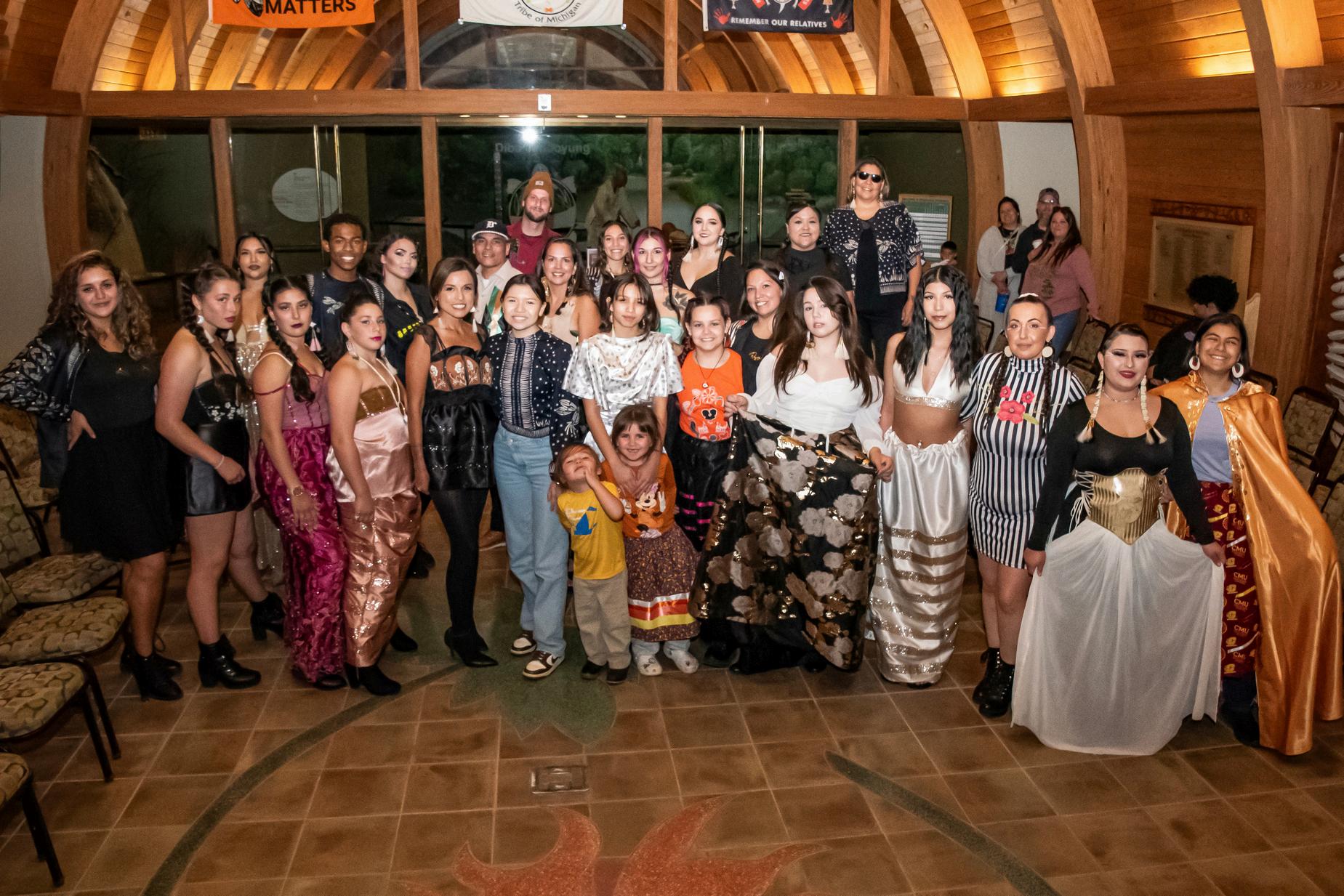
When the pandemic hit, she was in her basement, staring at a pile of birchbark she had harvested properly tobacco laid, prayers made Sacred And now, sitting Unused
“I cried,” she told me “You don’t waste that”
So she started making things Scanned beadwork, flipped it, mirrored it, printed it on fabric A crop top A gas mask Jackets At first, it was survival expression But then people started calling it fashion
“I wasn’t trying to be a designer,” she said “I was just trying to say something. I make stuff so I can talk.”
That’s the line that stuck with me. She doesn’t create for attention. She creates for language for release. For truth. One of her images shows a woman wearing nothing but a puffer jacket and thigh-high boots. It’s bold but it’s not about sex
“She felt safe,” Jillian said “That’s sacred”
The caption was about body autonomy, shame, and silence She expected trolls She got respect
“Not one bad comment,” she said “That’s how I knew it was real”
Her current work has shifted again this time toward stone
She was in Ontario, building a canoe, when she got invited to ceremony She walked barefoot on sacred petroglyphs Started crying She asked what happened to the water The elder looked at her “You’re not supposed to know that,” he said But she did.
“I’M JUST STOMPINGTHE GRASS DOWN SOTHE LITTLE ONES KNOWTHEY CAN WALK.”
The aquifer had been cut off when the dome was built over the site She hadn’t been told she just felt it That’s how she moves With knowing
Now she’s photographing petroglyphs folding, flipping, layering but not altering. The beings she reveals are already there. You just have to look.
She’s making one hundred of them. When complete, they’ll become immersive experiences projected images, surround sound made from ancient rhythms and extinct bird calls
“You’ll feel it in your body,” she said “It’s not art It’s ceremony ”
She doesn’t call herself spiritual. Doesn’t talk about visions. She just knows.
“I cry before I know why I speak before I understand what I’m saying”
That’s how her life works That’s how her work lives


“NOT ONE BAD COMMENT,” SHE SAID.“THAT’S HOW I KNEW IT WAS REAL.”
She’s a mother. A partner. A builder. Her husband is solid, supportive. She doesn’t dwell on it, but it’s clear they’re a unit. Her kids are sharp and kind. The whole place pulses with purpose.
She’s not chasing galleries or followers She’s remembering She’s showing others how to remember too
“I’m not trying to be the fire,” she told me “I’m just stomping the grass so the little ones know they can walk”

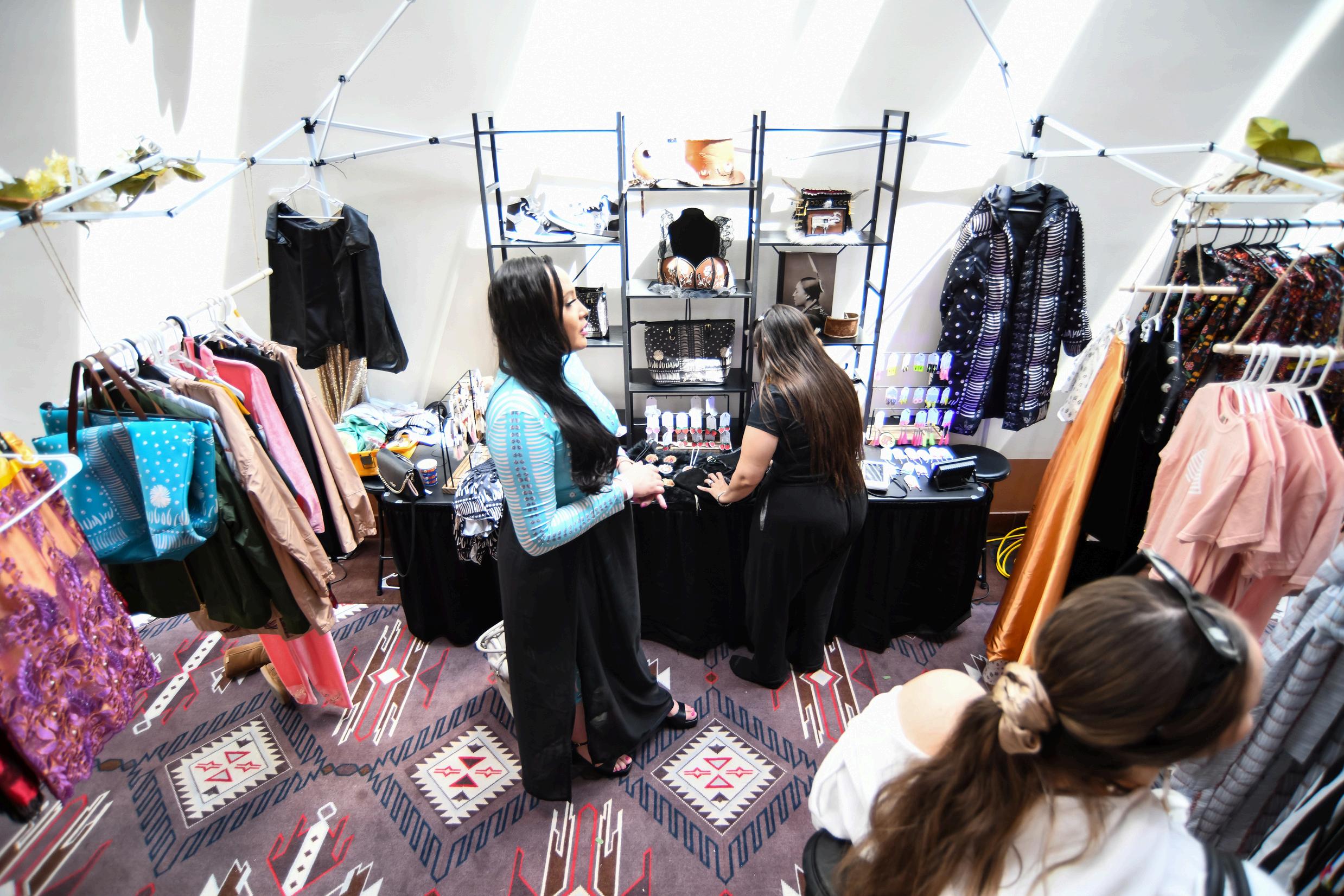
This is why I started STOKE For stories like Jillian’s Not neat, not polished, but real and already burning
What she’s doing isn’t ahead of its time It’s right on time And we ’ re lucky to witness it

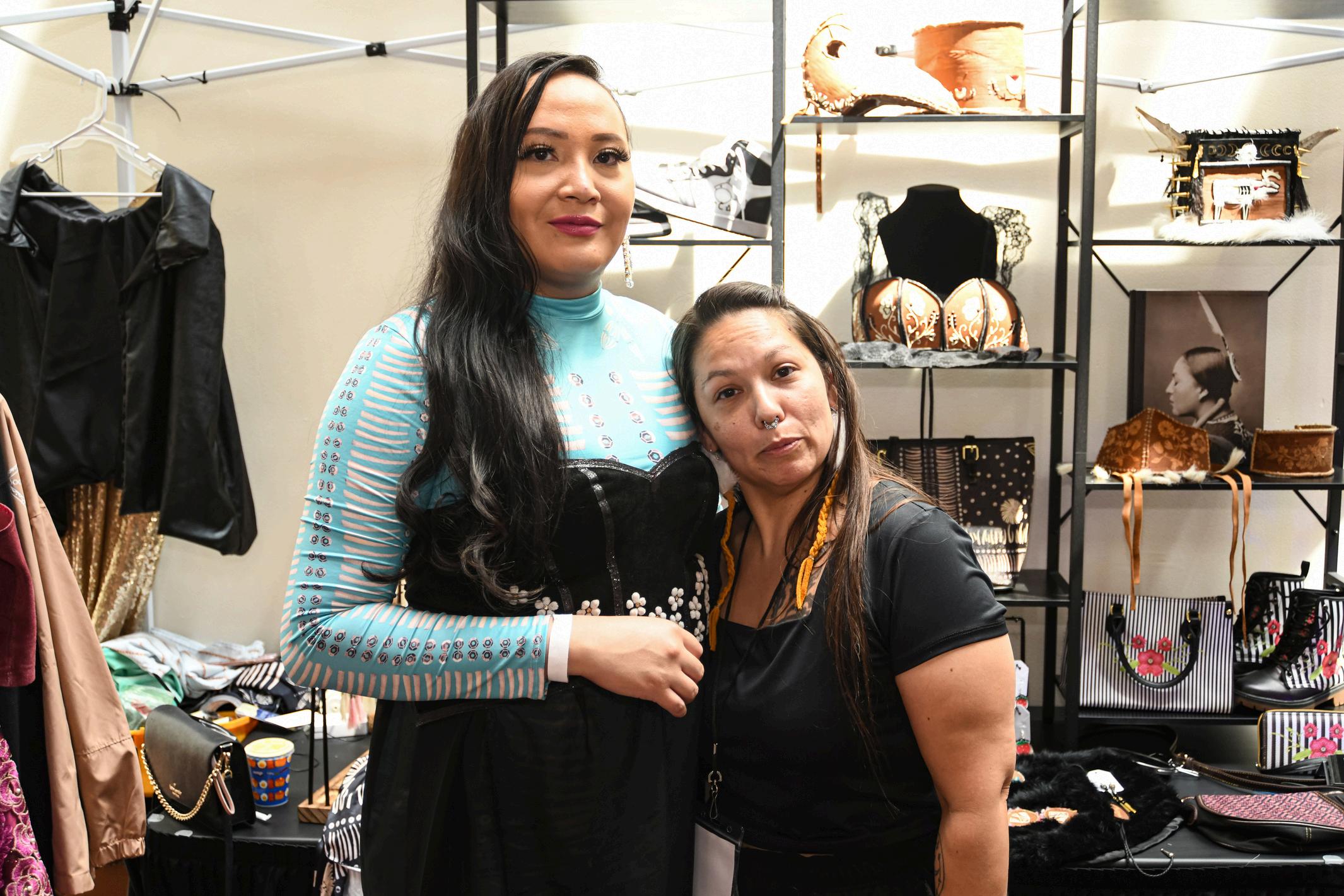
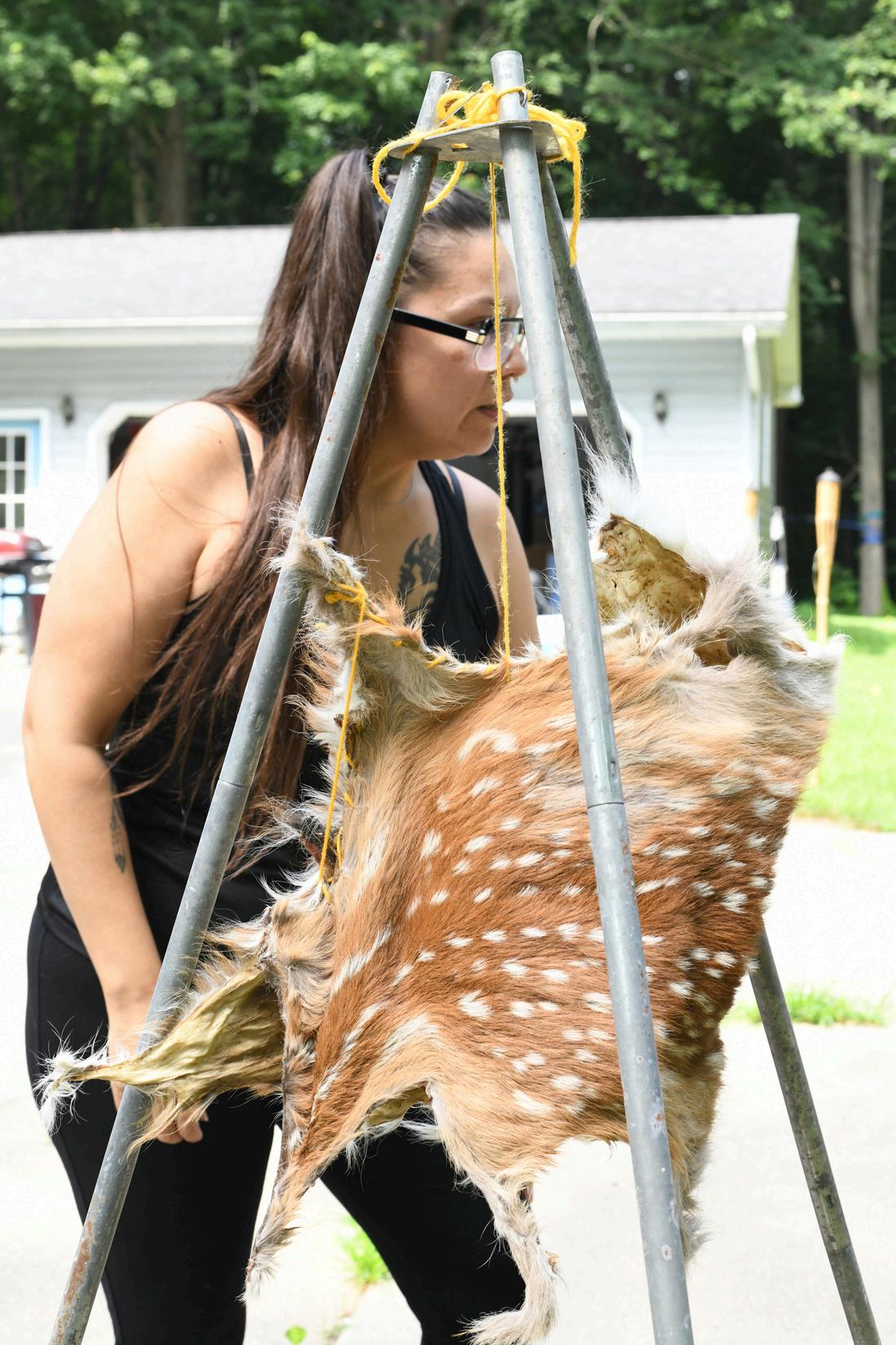






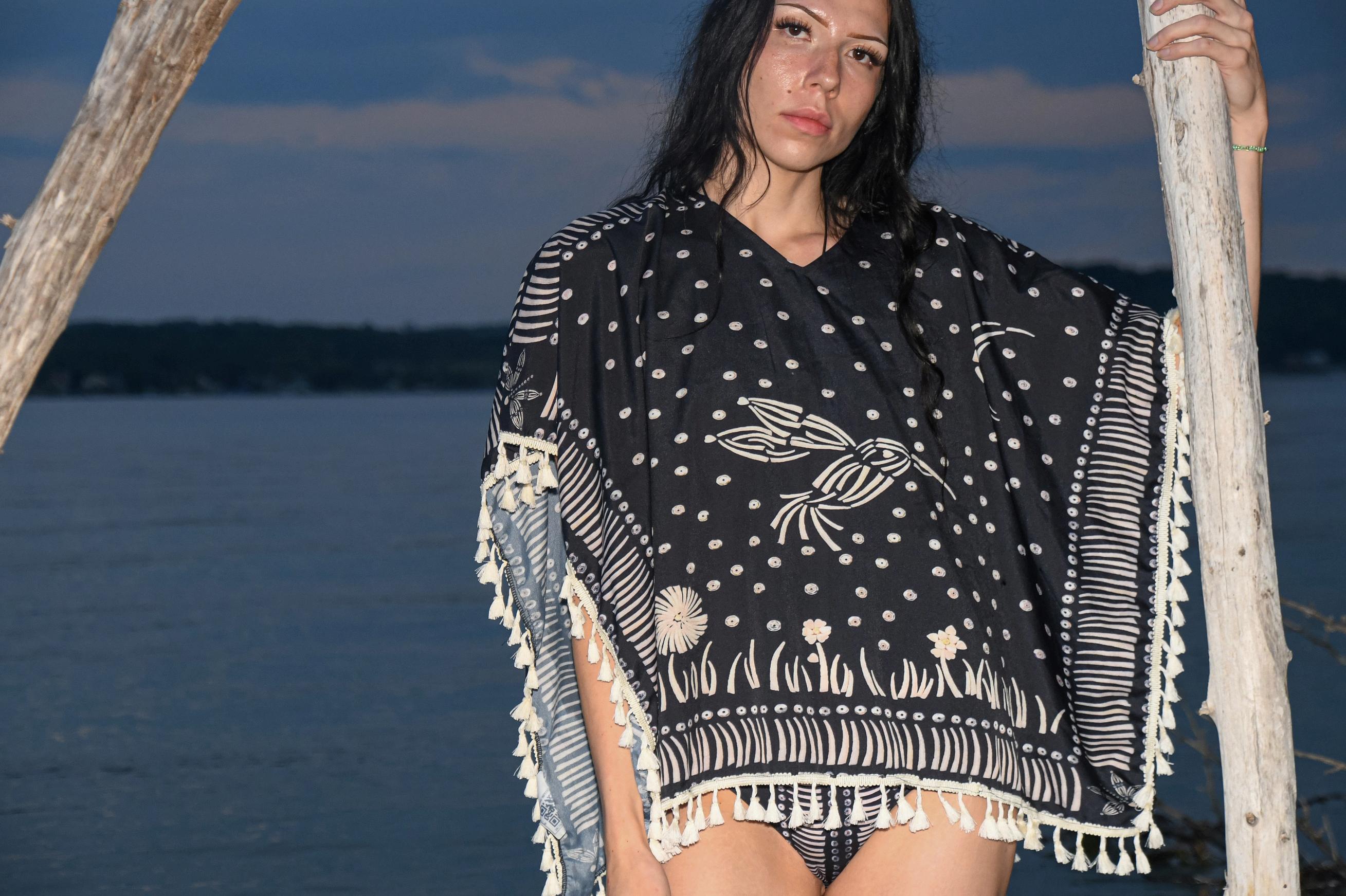
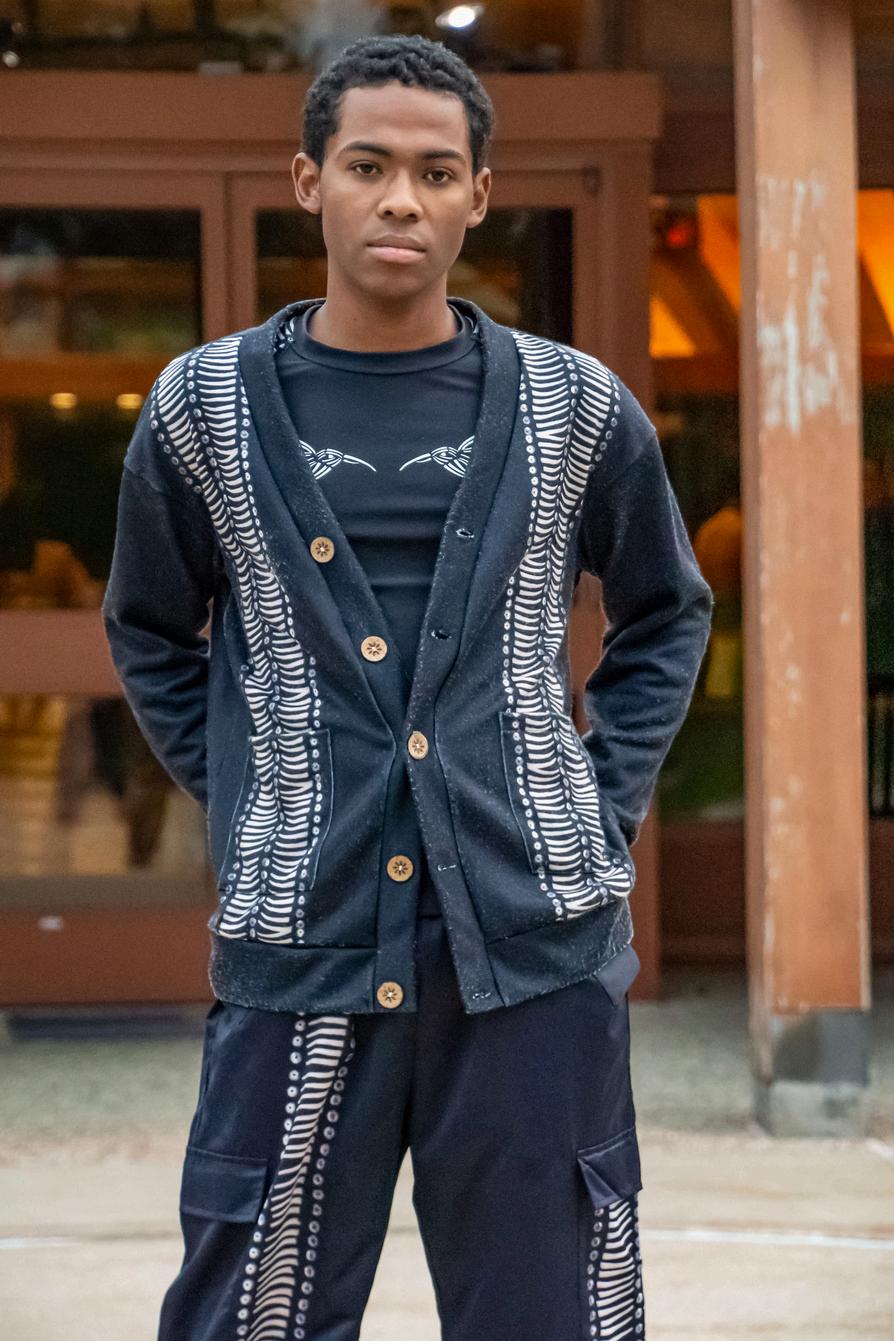
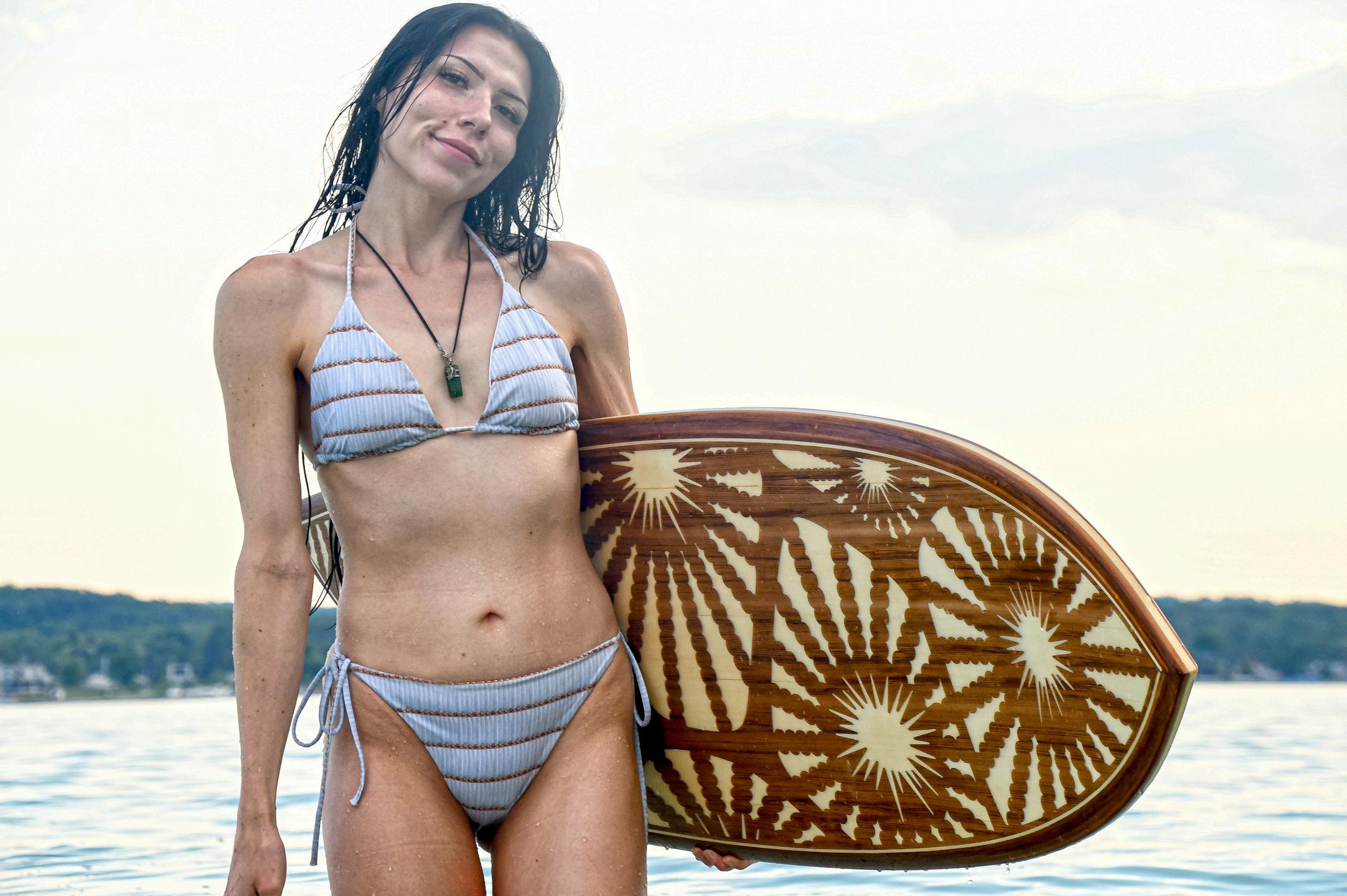

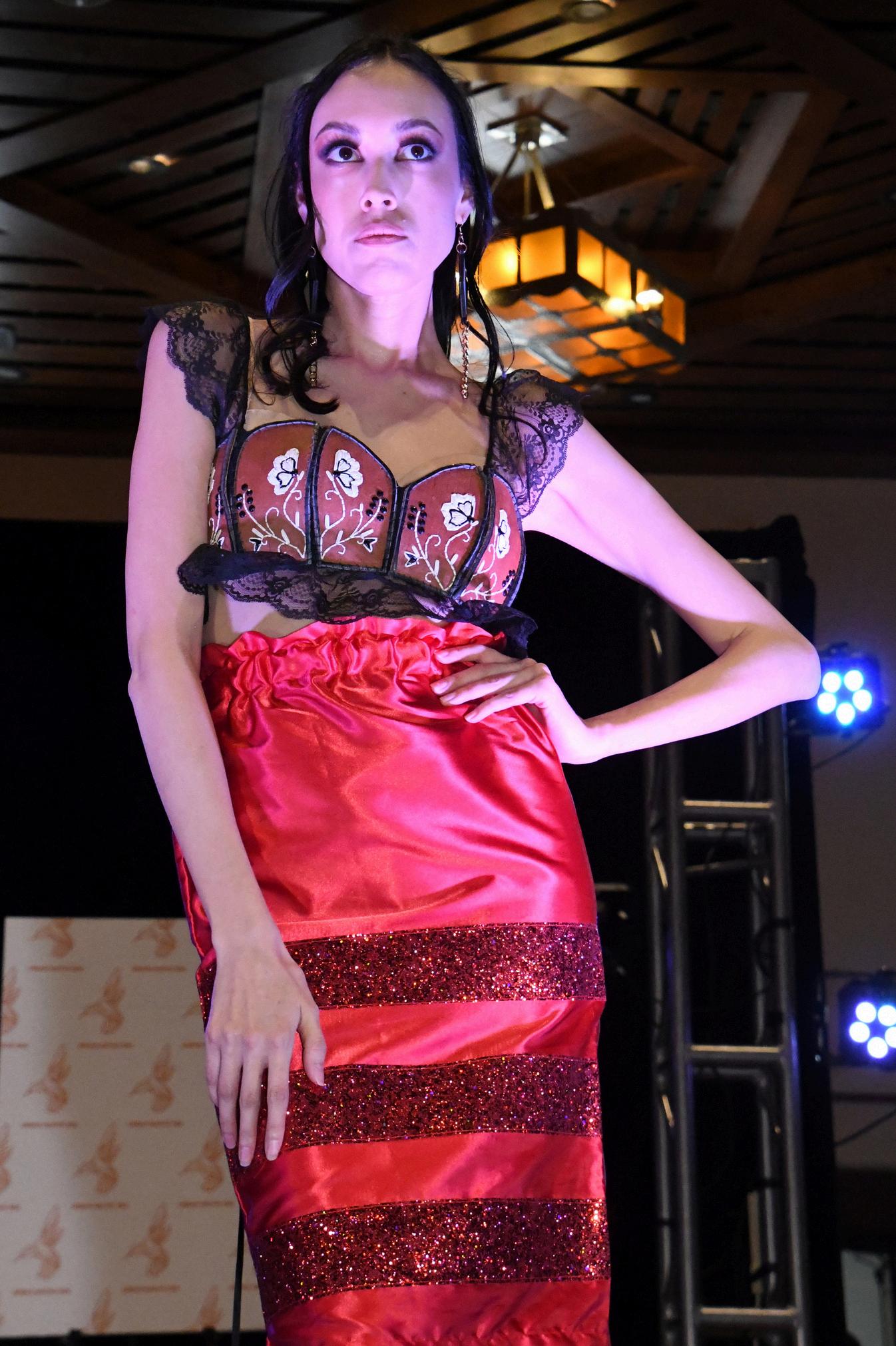
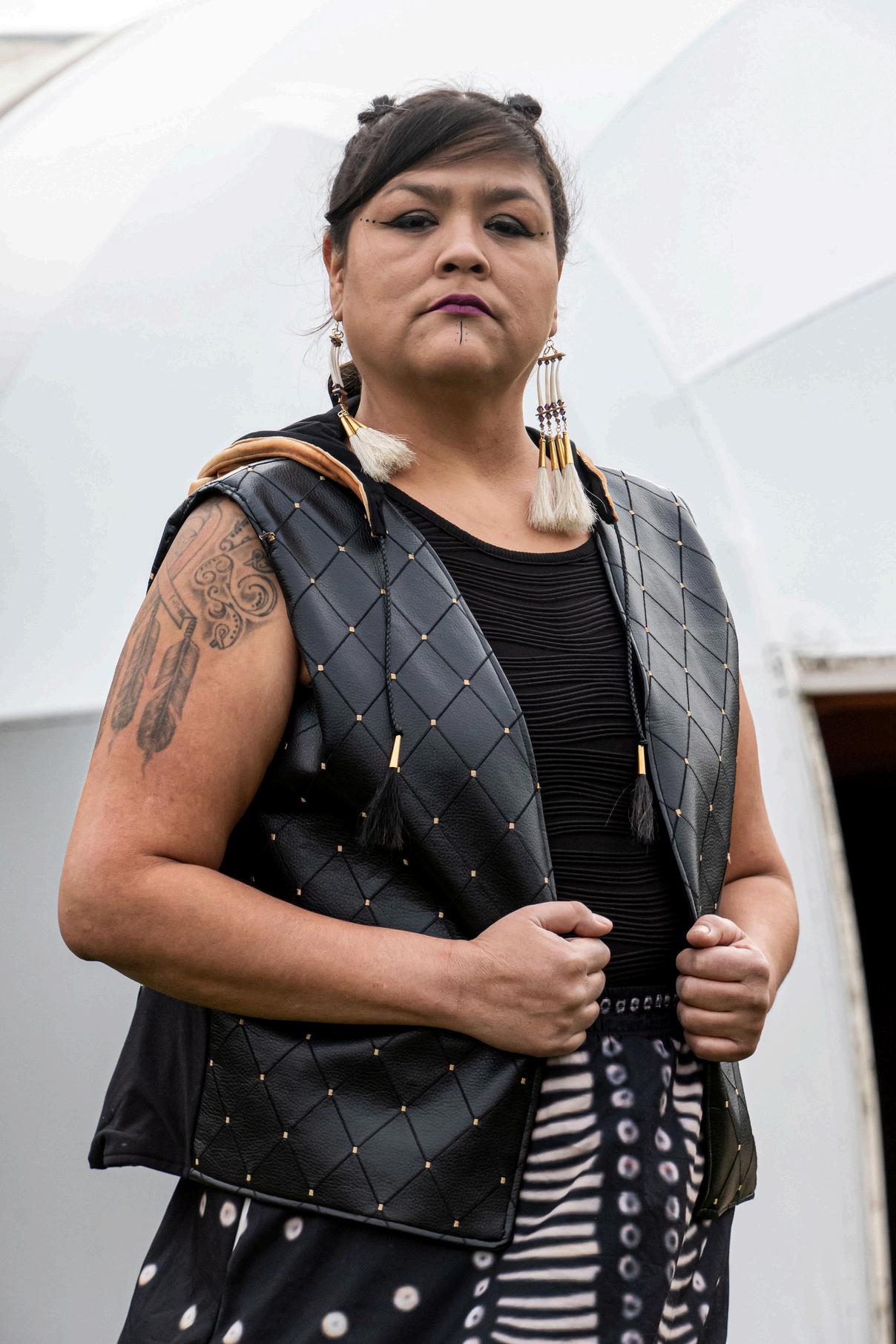
AMANDA WESTRA
THIS IS WHAT RESISTANCE LOOKS LIKE
BY PHILIP HUTCHINSON
It was an unusually lively day at Cannonsburg Ski Area when I first met Amanda during a Chill Foundation riding day, doubling as a celebration for Mike Cox’s birthday The Chill Foundation, launched in 1995 by Jake and Donna Carpenter of Burton Snowboards, channels the power of boardsports to empower youth through its valuesdriven programming
Mike Cox longtime confidant and former righthand to Jake Burton was in good company, as we rallied around the legacy of the Snurfer brand. Its revival was on full display that day, led by the new owners, including “Stacey in the snow ” reinforcing that collaboration has always been our north star Amanda had personally invited me and The Pigpen crew Taylor, Al, and Kenny “The Missile” to come down, interact, and help with the foundation’s mission We all jumped at the chance, posse’d up, and motored south for a day that would leave its mark
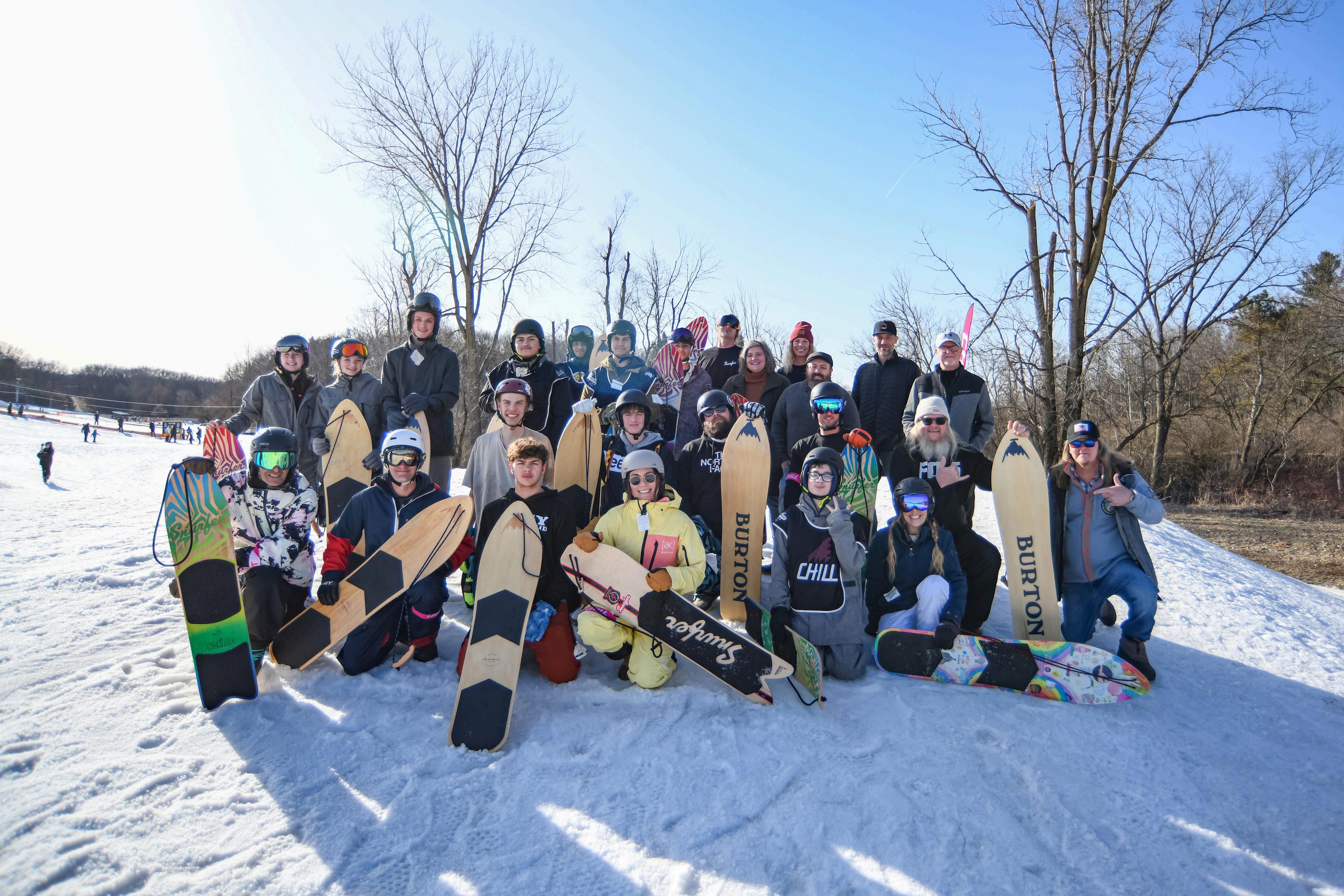
Amanda grew up in Hudsonville, a conservative, mostly white town in West Michigan. It wasn’t exactly the kind of place that made it easy for an Indigenous kid to understand where she came from.
“”I go by Amanda in this world,” she says, “but I was gifted the name Nanacasi Hummingbird when I started reconnecting I’m still figuring out that part of me ”
After high school, she skipped the straight-to-college track She chased life instead working on Mackinac Island, absorbing cultures in Costa Rica, and eventually starting college at 23. She studied graphic design, but even then she refused to color inside the lines. Her senior thesis wasn’t a logo package it was an entire lesson plan called Decolonizing Your Mind for Young People, complete with handmade headdresses and fiber art that she set on fire or tore apart to make a point.
CHILL FINDS HER
Snowboarding came into Amanda’s life at 15, a weapon against seasonal depression and the long gray Michigan winters. She fell for it hard, and years later, when she heard the Chill Foundation might be coming to West Michigan, she jumped.
“I was a wild card,” she laughs “I’d taught English to kids in Costa Rica, coached mountain biking, worked with youth in different ways but no formal training Chill still took me in”
Her time with Chill was all about the work you can’t learn from a manual: trauma-informed teaching, building trust with BIPOC and Indigenous youth, using boardsports as both an escape and a mirror
“There’s no rulebook for this work,” she says “We’re still figuring out how trauma shapes the brain, what equity actually means in practice It’s problem-solving on the fly, every single day”
THE PATH BEST CHOSEN
Amanda’s path was never straight more like a powder line through the trees, full of creative turns and calculated risk At 23, she went to college for graphic design, but even then she refused to color inside the lines “I was the rebel,” she laughs Her work wasn’t about fonts or layouts it was about meaning Her thesis? A full-blown lesson plan called Decolonizing Your Mind for Young People, complete with handmade headdresses, boats, and paper art she later burned or tore apart as the story unfolded. She created a graphic novel where each turn of the page dismantled the sanitized history kids are taught in school, replacing it with something real. Another project a massive fiber wave soaked in oil was a blunt protest against Line 5.
It wasn’t the kind of portfolio that landed her a cushy agency gig, but it was unapologetically hers. She worked for her tribe doing traditional Anishinaabe art, kept snowboarding, and carved her own path When she first heard about the Chill Foundation, she started fundraising for them without ever imagining the program would land in West Michigan But the region’s deep snowboarding history and some strong advocacy from friends connected to the Burton family changed that So when talk of a local job came up, she threw her name in the ring, straight up and unfiltered
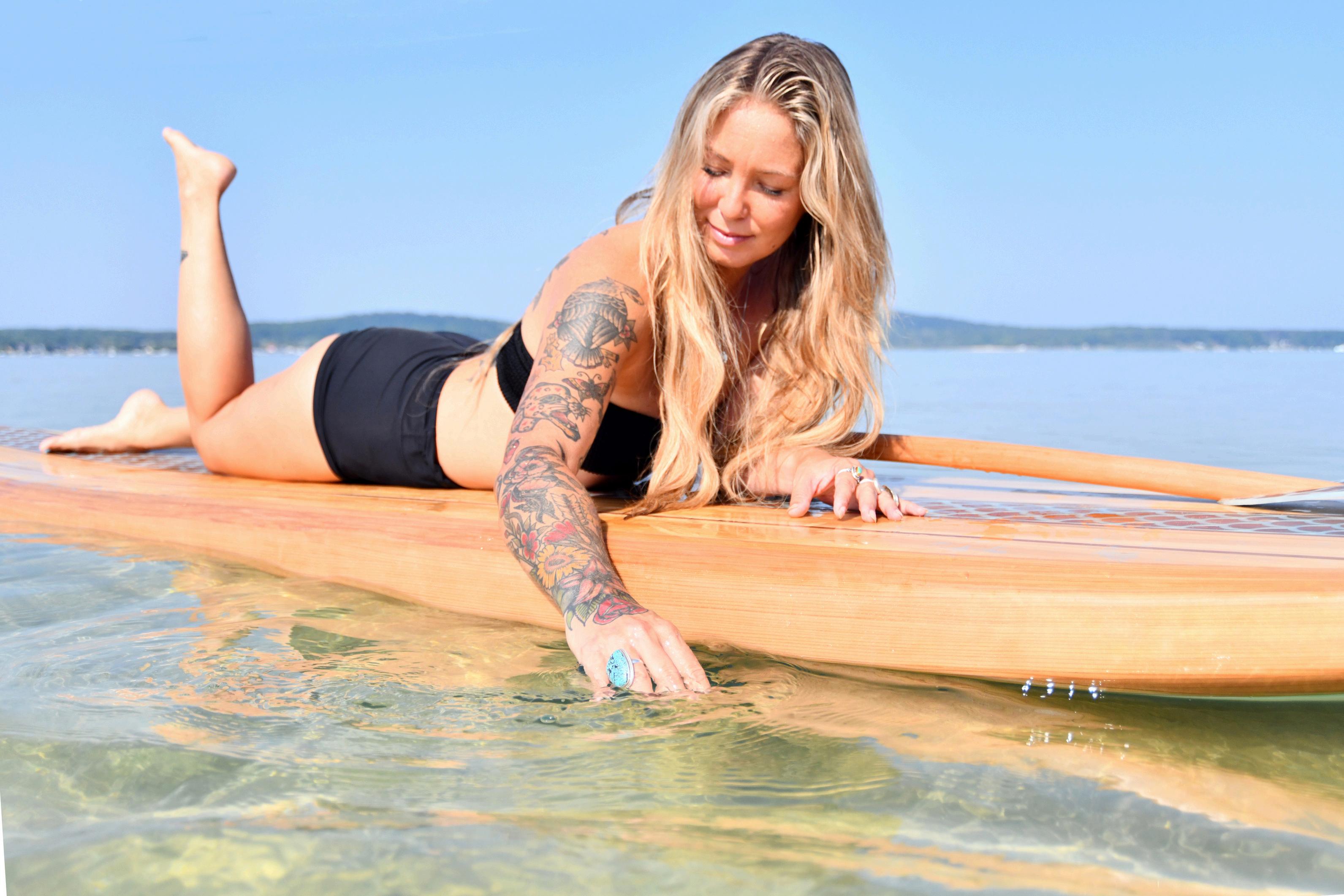
Walking Back to the Circle
Amanda’s path back into her Indigenous identity has been slow and deliberate. Her tribe was federally recognized less than her lifetime ago. Her grandfather reconnected the family to their bloodline after discovering the truth about his father, and Amanda has been learning ever since through workshops, powwows, and the guidance of elders
Recently, she stepped into the powwow circle as a jingle dress dancer a role her auntie told her was hers, tied to healing
“Iwas terrified,” she admits “It’s a huge responsibility Imposter syndrome hit me hard But I take it seriously I’d rather make mistakes and learn than do nothing.”
Her spirit name, Hummingbird, is her dailyguide When she dances, she carries the nameWaterWoman “I haven’twrapped my head around allit meansyet But I knowI can’t rush it I have towalk it in a goodway”
BEYOND CHILL
The West Michigan Chill chapter has closed, but Amanda isn’t slowing down. She still mentors youth, volunteers, paints, sails, and is considering grad school in mental health and social work
She says she’s in a “curious stage” of life knowing her next move involves living closer to water, letting Mishigami (Lake Michigan) continue to teach her “I’m putting myself out there more, telling my story, welcoming others to the land I don’t know exactly what the future looks like, but I know it’s coming”
Why She Matters
Amanda Westra is more than a snowboarder She’s an artist, a teacher, a jingle dress dancer, a truth-teller, and a community builder She’s doing the hard work of finding herself in a world that too often tries to tell her who she’s supposed to be
In her words: “It’s messy It’s exhausting But it’s real And I’m here for the right reasons ”
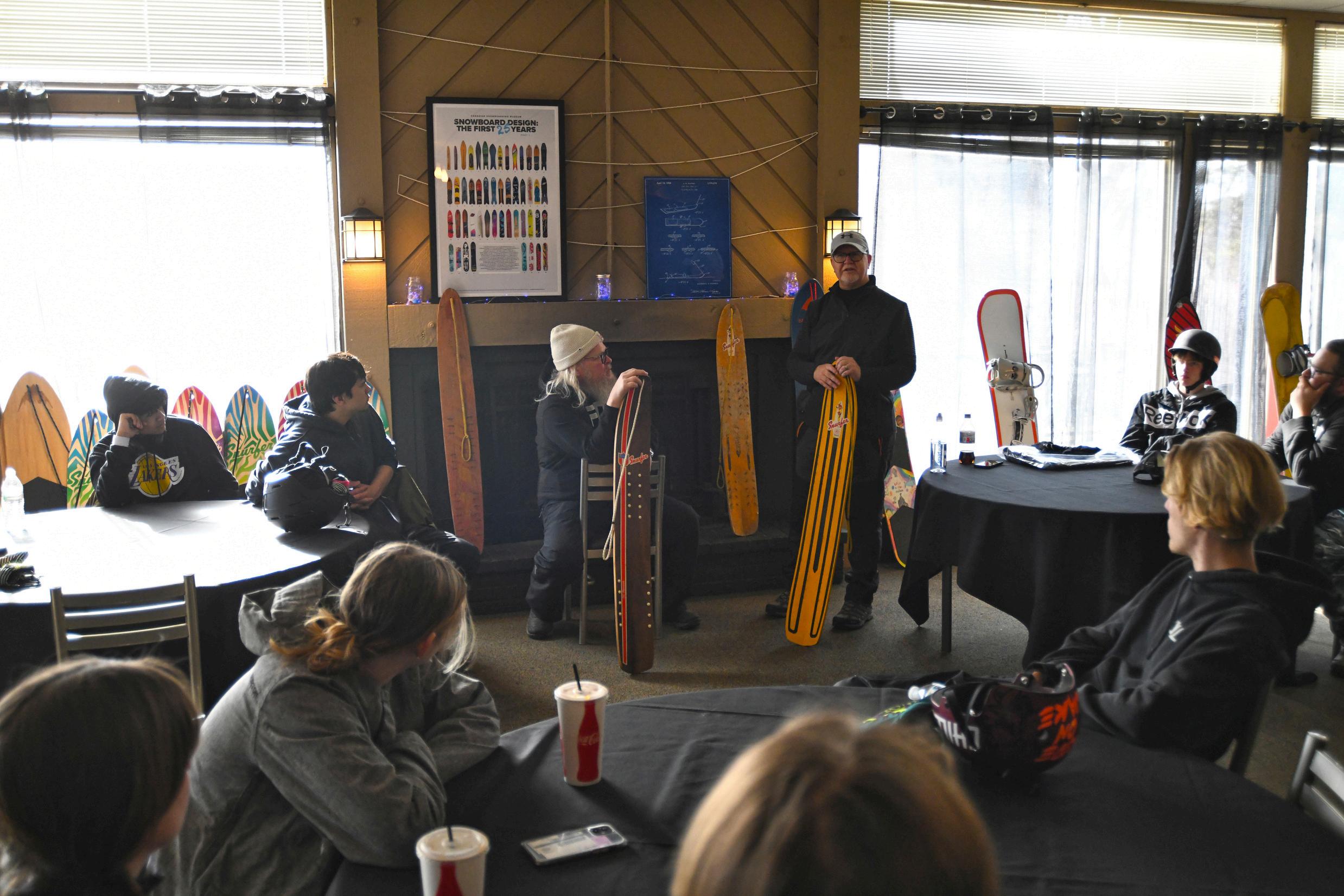


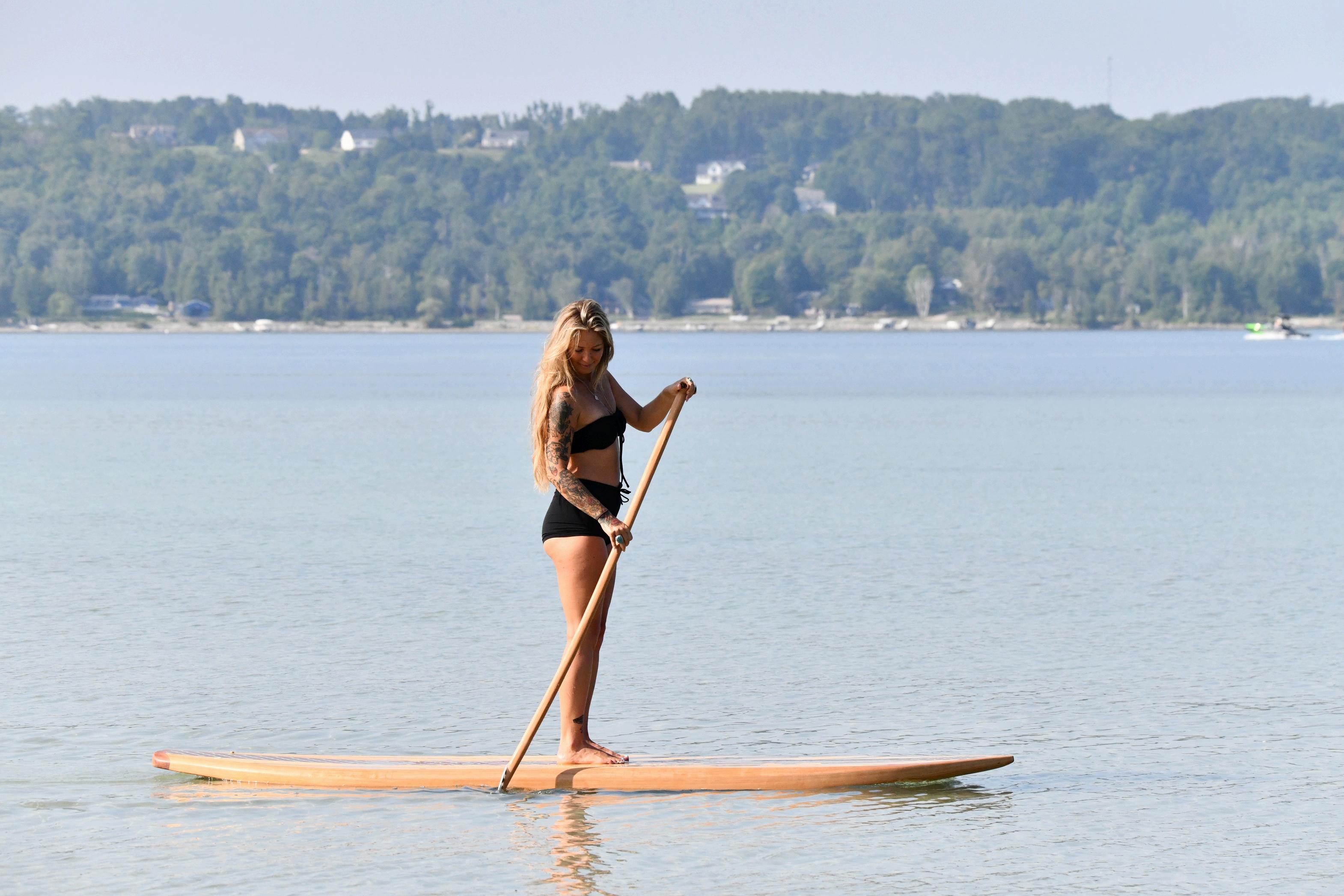

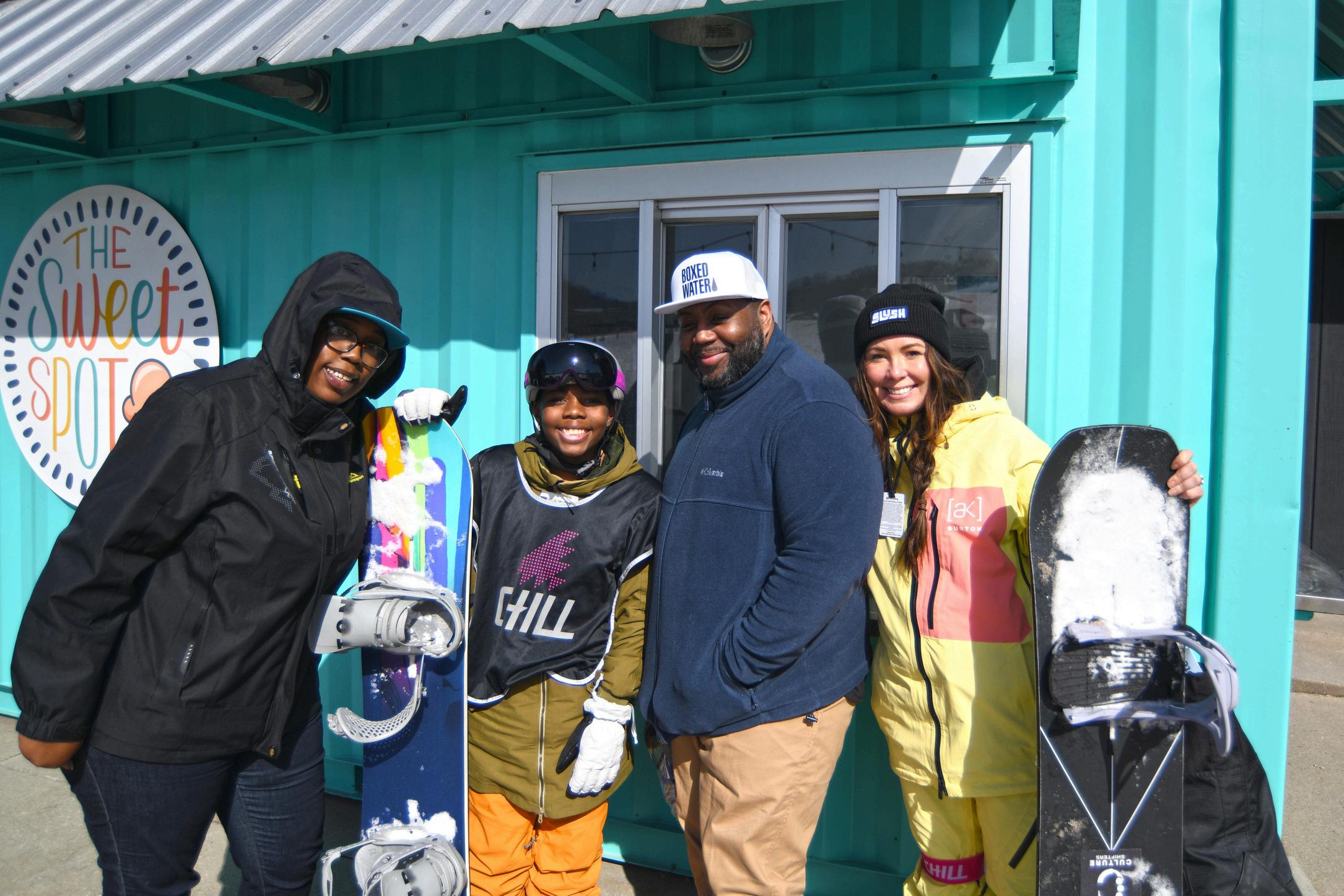








BLISS POLO
ECHOES OF THUNDER
BY PHILIP HUTCHINSON
Northern Michigan has its surprises Some are quiet the kind you stumble upon down a gravel road, tucked between a hayfield and the treeline Others, like Bliss Polo, announce themselves before you even see them You hear the gallop, the calls between riders, the thwack of mallets, and then the field comes into view green and wide, framed by horses in motion and Sturgeon Bay just down the road
For me, Bliss Polo has always been one of those spots worth pulling over for On summer trips to Sturgeon Bay for a beach day with the family, we’d often stop here, catch a couple of chukkers, and soak in the scene. I’d grab my camera shooting for local tourism pieces in years past while my oldest daughter lit up watching the horses, a nod to her own riding days with one of her mentors Karen Offield
And I can’t tell you how many people I’ve met who were simply out exploring Northern Michigan, came around that corner, and stopped in disbelief because there it was, the “Sport of Kings” being played right here on local soil You can wander over to the Bliss General Store, grab a soda, a snack, maybe a souvenir, then stroll back to the sidelines It’s unique, it’s open, and it’s ours
“polo isn’t just this exclusive thing you see in movies—it’s a sport with grit, skill, and heart And that small-town Northern Michigan can put on a worldclass match. I hope they leave feeling like they saw something special, because they did.”

What makes it even better? It’s always been free for the public, and always will be. The polo grounds are community-first, employing locals for everything from field crew to flaggers And in all my years around horses, I’ve never seen them cared for the way these polo ponies are cared for clearly loved, clearly maintained at the highest standard There’s nothing bad to say about it It’s pure positivity Bliss Polo brings the fire, brings the smoke, and absolutely brings the stoke Everyone involved is top-notch

Photo Emily Velchansky
I sat down with Mason Lampton Jr, who his father calls “the new management,” to talk about how this field went from a potato farm to a 15-year tradition, why the weather here is a gift for horses, and why Bliss Polo will always be more than just a game
Stoke: There’s sometimes talk about horses in polo not being cared for what do you say to that?
Mason: That’s something I want to be crystal clear about. These horses are our most valuable asset and we take care of them at the highest level. They’re expensive, they’re trained for years, and they’re partners in this sport. I’ve played some of my horses for over a decade it’s not about cycling through them. When one gets hurt, it’s devastating. Anyone who’s been out here can see the level of care they get.

Stoke: What’s the atmosphere like here compared to other polo clubs you ’ ve been to?
Mason: It’s super laid-back No velvet ropes, no dress code People bring lawn chairs, coolers, kids, and dogs You might be sitting next to someone who’s never seen a chukker in their life, and two seats over there’s a guy who’s played in Argentina It’s that mix that makes it special
Stoke: What’s your favorite thing about Bliss Polo?
Mason: It’s a community event Locals, summer visitors, people just passing through they all end up here You hear folks say all the time, “I came around the corner and saw the field what in the hell is going on?” It’s lowkey. We could build VIP boxes and all that, but I like that you can walk right up, grab a spot on the sideline, and be part of it
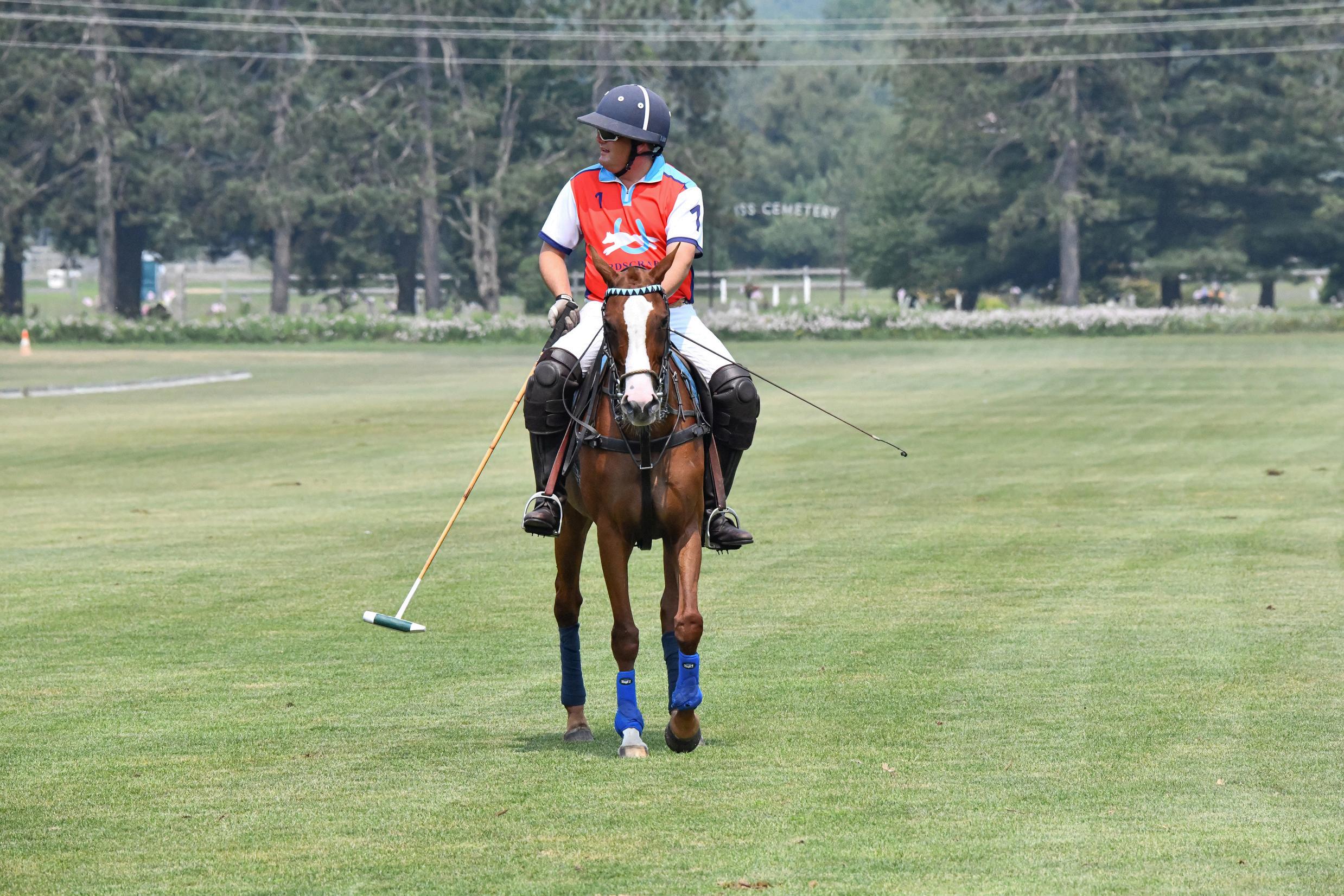
Stoke: Who makes it all happen behind the scenes?
Mason: A lot of locals We’ve had Brian working here for 15 years The kids that do the flagging and field repair are from the area The referees travel all over the country but when they’re here, they’re part of the crew It’s cool to look back at group photos from 15 years ago kids who were 14 then are now in their 30s
Stoke: Has Bliss Polo changed much since that first season?
Mason: Oh yeah Back then it was more about just getting enough players and horses here to have a game Now we ’ ve got a full summer schedule, higher-level players, and the word’s out people plan trips around it. But it still has that same community vibe.
From a potato field to a 15year summer tradition, Bliss Polo is proof that the right mix of vision, community, and horses can turn a quiet patch of Michigan into something truly unexpected If you ’ re anywhere near Sturgeon Bay on a summer weekend, you’ll hear the hoofbeats before you see the field And if you pull over, you might just stay for the whole match
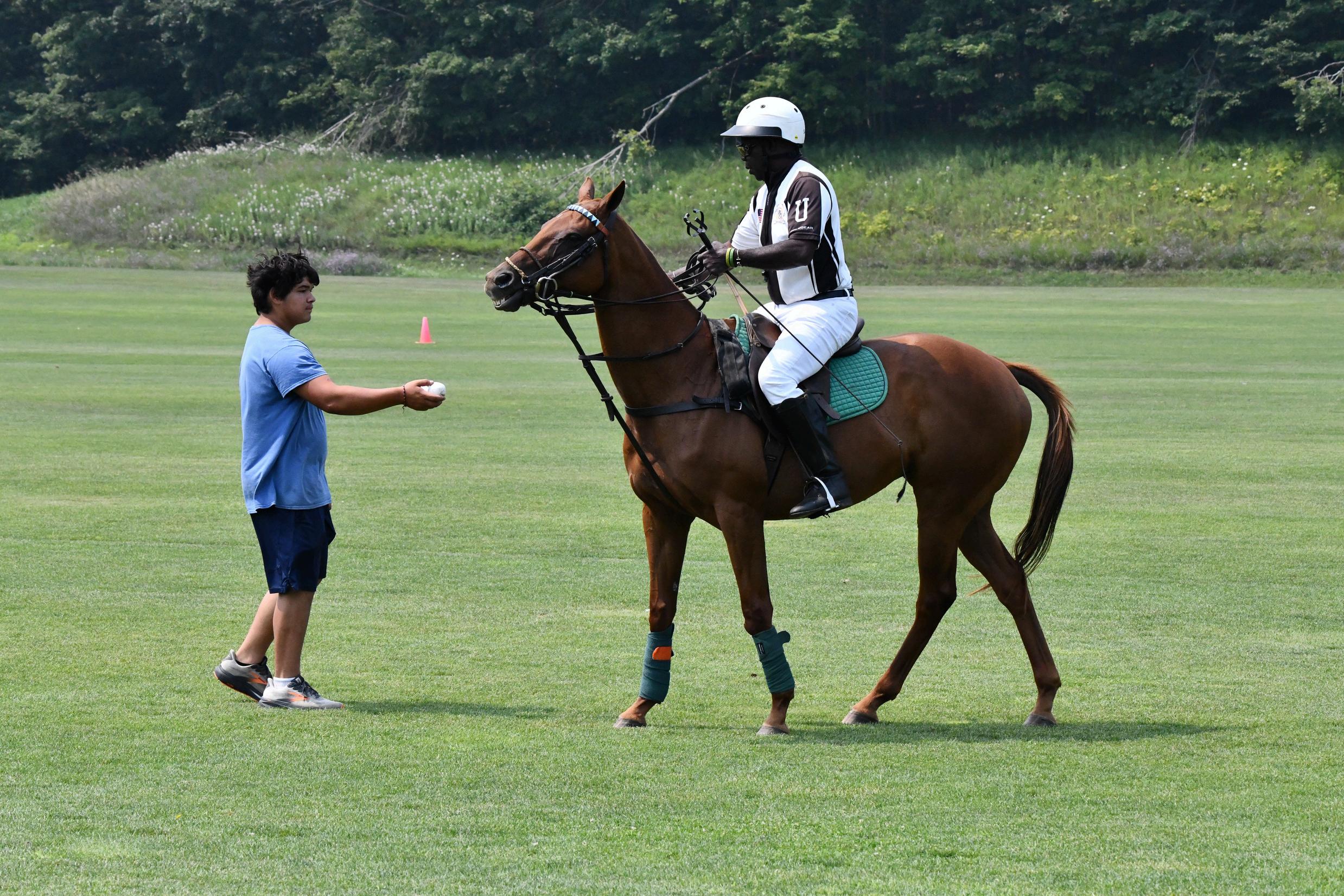

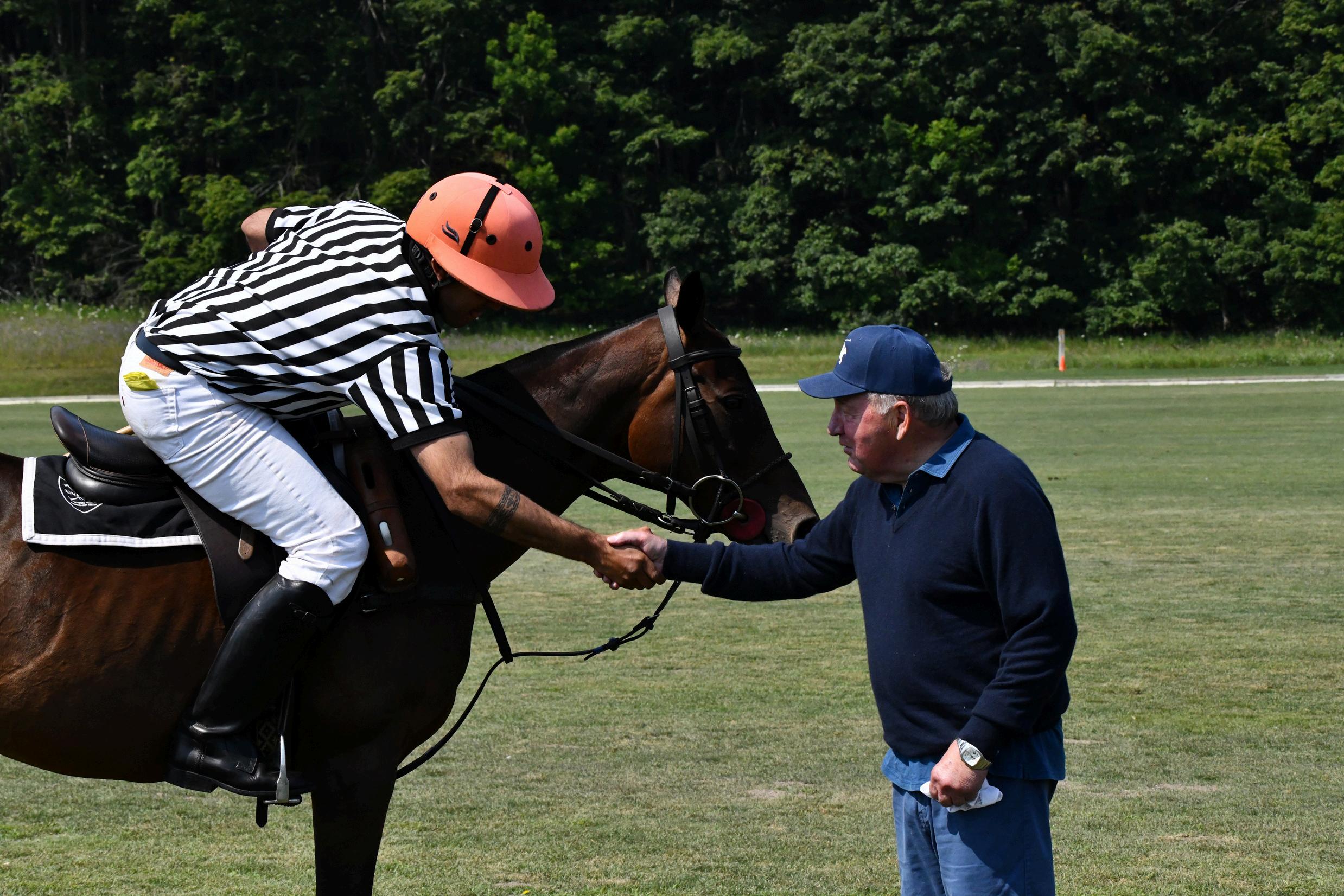


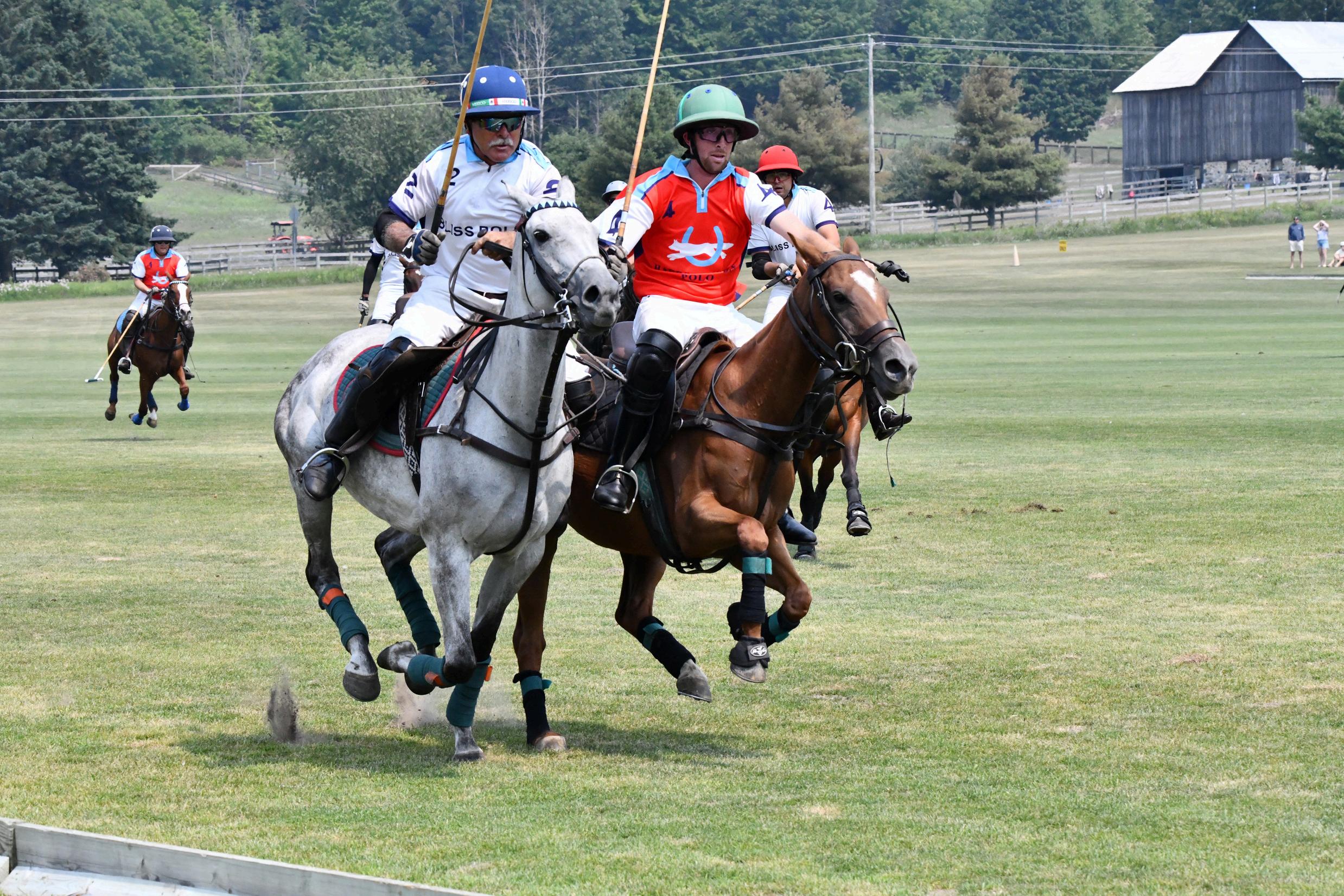
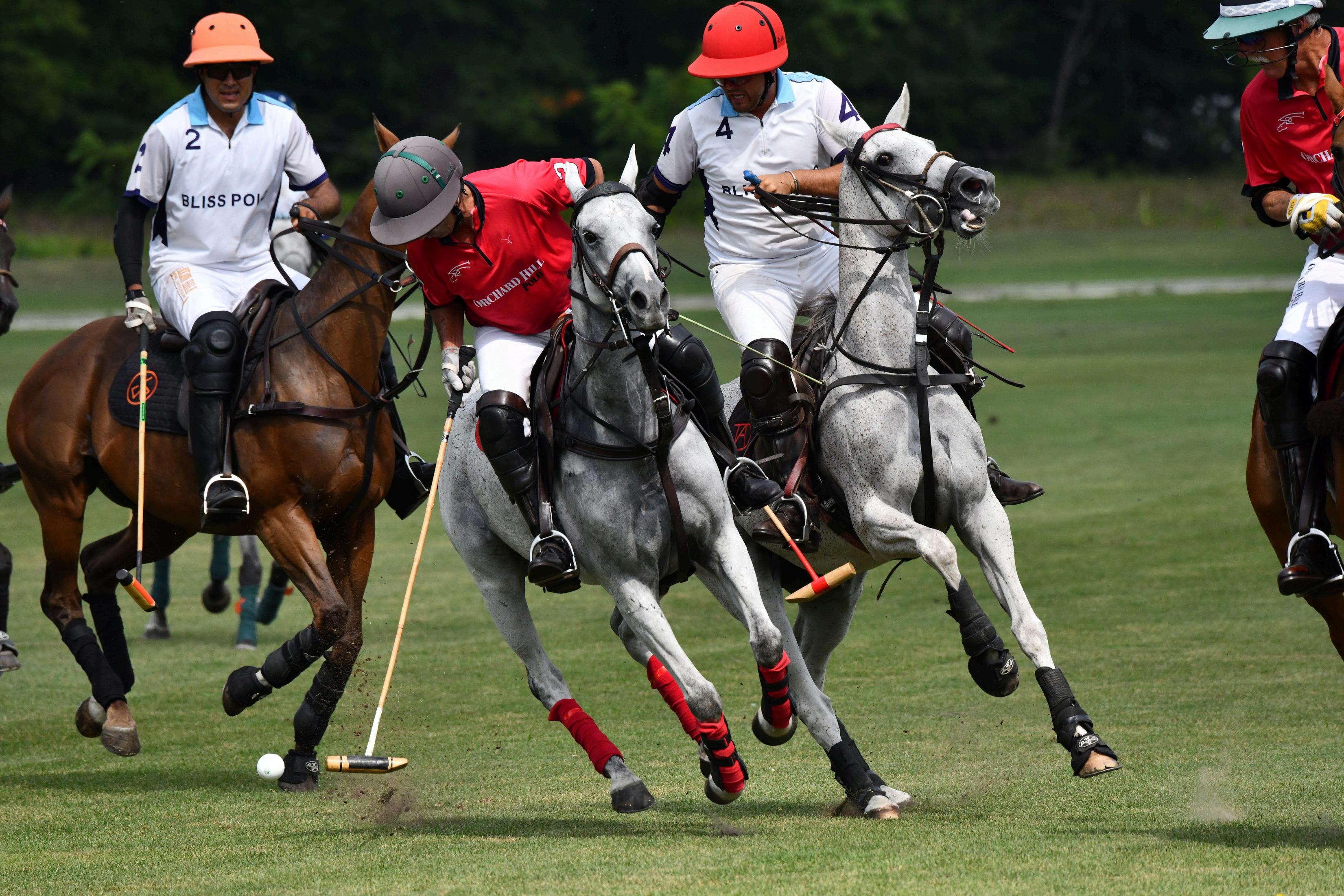
L
AKE EFFECT RALLY TEAM

The Lake Effect
By Philip Hutchinson
Tim Michaels has been chasing speed since he was a Florida kid burning up go-kart tracks and drag strips The kind of kid who had remote-control cars before he had peach fuzz Fast-forward to late ’90s Michigan one ride in an Audi Quattro at Boyne Highlands and he’s ruined for life The grip, the snow, the slide game over
Eight years of standing in the woods watching other people send it was enough In 2017, he caged his car By summer ’18, he’s on the start line of the Central UP Rally pounding rain, rivers across the road, cars dying everywhere Tim keeps it smart, keeps it moving, crosses the line seventh overall, second in class The hook’s in deep

Rally for Tim isn’t just racing it’s precision chaos “Slow is smooth, smooth is fast,” he says It’s knowing when to breathe on the brake and when to keep it flat over a blind crest It’s titles with NASA Rally Sport It’s mentoring rookies like Burton rider Chase Blakely and James Walker until their cars and their heads are ready for the fight
Now Lake Effect Rally Team is three cars wide, backed by over 30 crew and diehards who wrench, cook, and stand in the rain so their guys can rip at 90 mph through the pines. Tim’s next move? Take it national and open the Midwest’s first rally school. Not just for racers. For anyone who wants to know how to survive Michigan when Mother Nature’s in a bad mood.

“Pastrana? Yeah, I’ve talked to him plenty,” Tim says “He even signed a beer can with my car on it” That happened after Austin Brothers Brewery put Tim’s Audi on a label and Pastrana spotted it “We chat at most events now Rally’s like that open arms Doesn’t matter if you ’ re a rookie or a world champ, you ’ re part of the family”
It’s not just Pastrana Tim’s lined up against names like the late Ken Block, Brennan Semeniuk, even Def Leppard’s Vivian Campbell “These guys bring attention and money to the sport just like Dale Earnhardt did for NASCAR They set the bar, but rally’s different Anything can happen out there We’re not on the same track in the same car Conditions change. You can have a $300,000 build and still get beat by a $30,000 one if the notes are right and the road’s on your side.”
That unpredictability is what Tim loves “Sometimes they beat me, sometimes I beat them and when you do, you feel damn good But win or lose, everyone ’ s in it together We call it rally family for a reason Out here, your life’s in the hands of the car behind you If you go off, they’re the first ones to help”
It’s a culture built on grit, respect, and a shared addiction to speed Legends or locals, everyone ’ s chasing the same thing: the perfect stage, the perfect run, the perfect moment when you ’ re flat-out through the trees and everything else disappears
Ask him about Bonfire Alley at Snowdrift and his eyes light up Negative 25 Thousands of fans in the woods Bonfires throwing heat into the cockpit. The whole thing feels like a stunt scene from a Bond movie except you ’ re the one behind the wheel. “Closest thing to old-school Group B chaos you’ll find in the U.S.,” Tim says. “And you ’ re there to send it.”
Through smashed fenders, podium highs, ditch-dives, and late-night wrench sessions, the drive never dies “I’m a Gforce junkie,” Tim says “When I’m strapped in and flying through the trees at 90, that’s my happy place Nothing else exists”

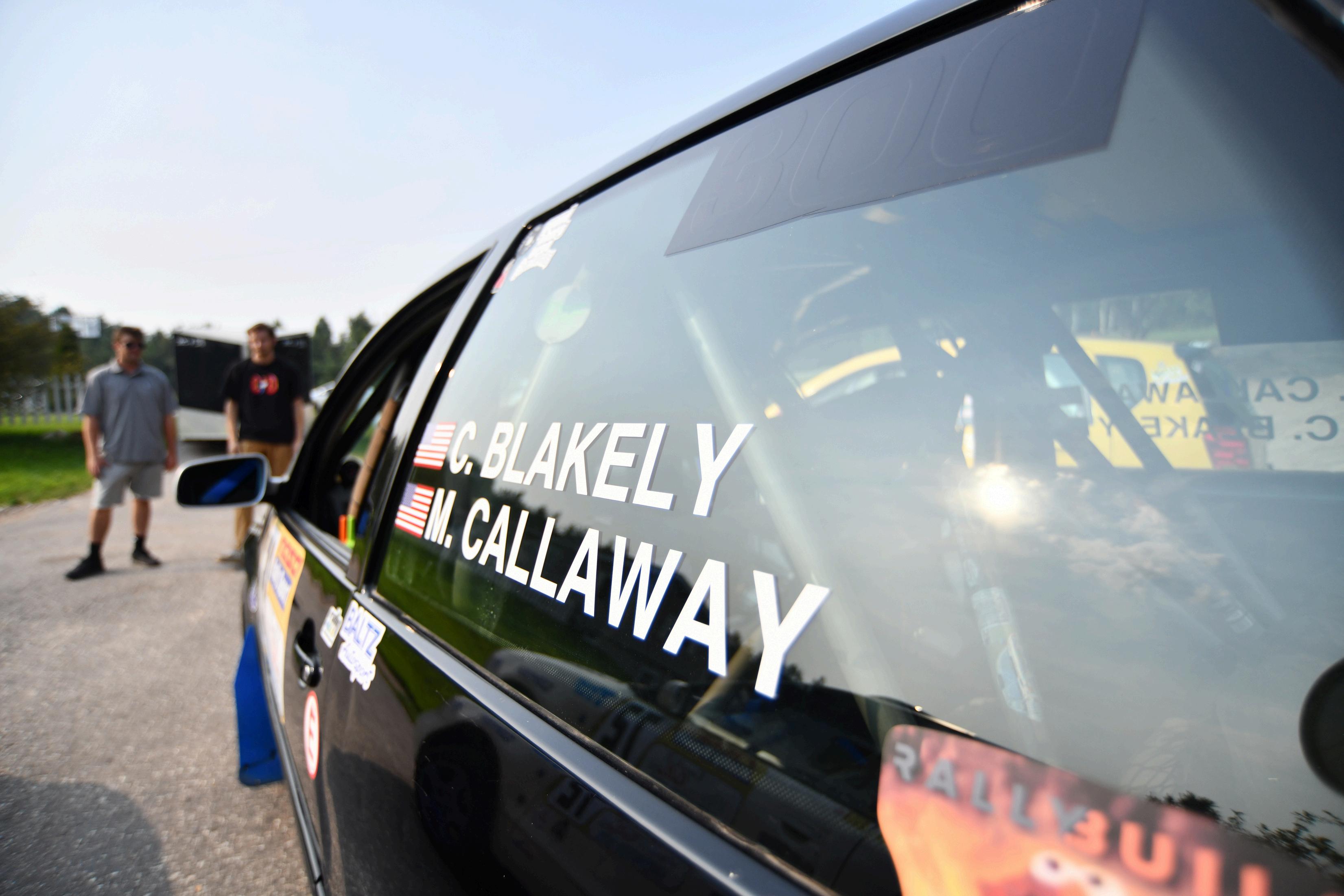
If you ’ re lucky, you’ll catch that Audi howl echoing through the woods If you ’ re smart, you’ll be trackside with a map in one hand and a thermos in the other Just don’t stand too close




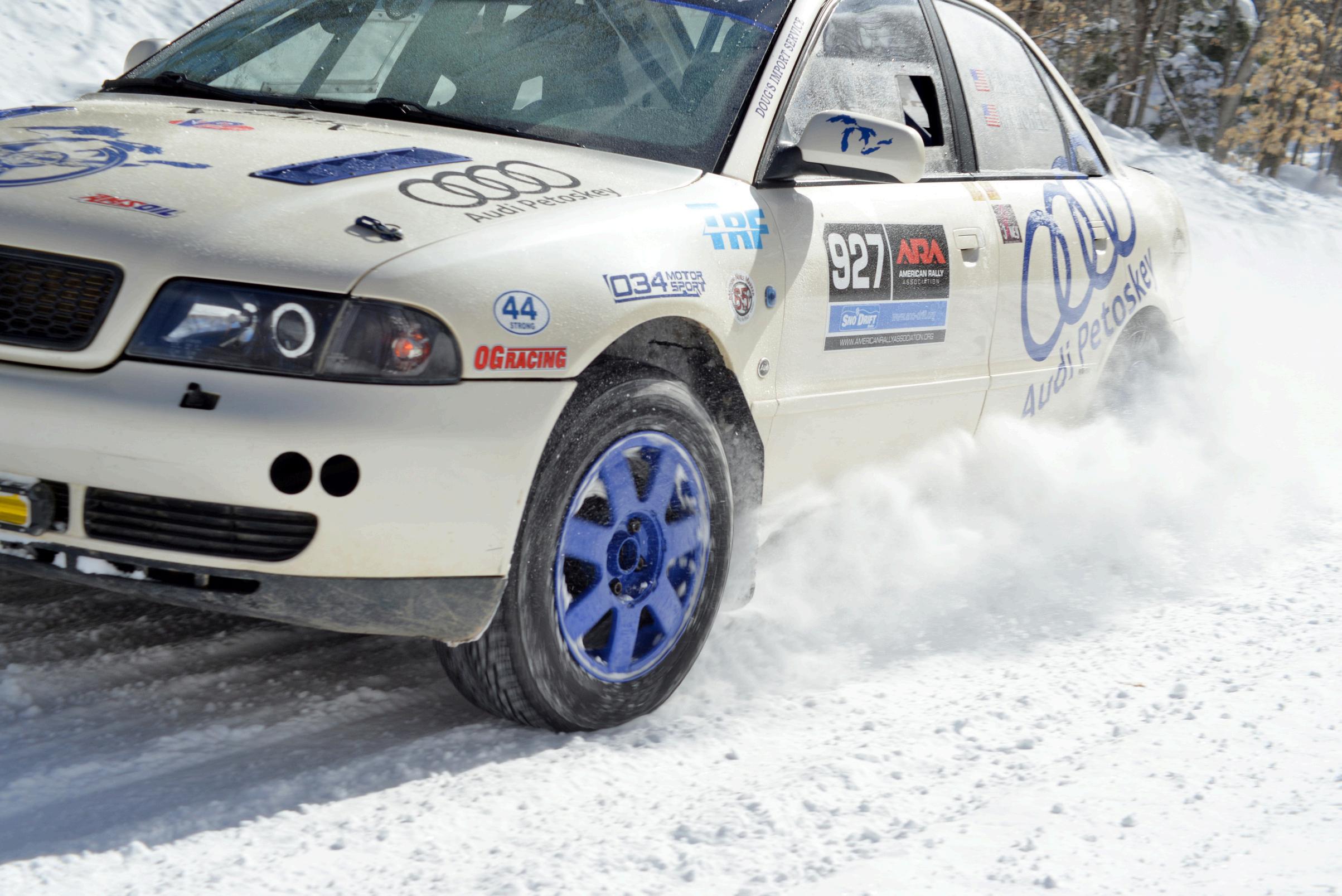
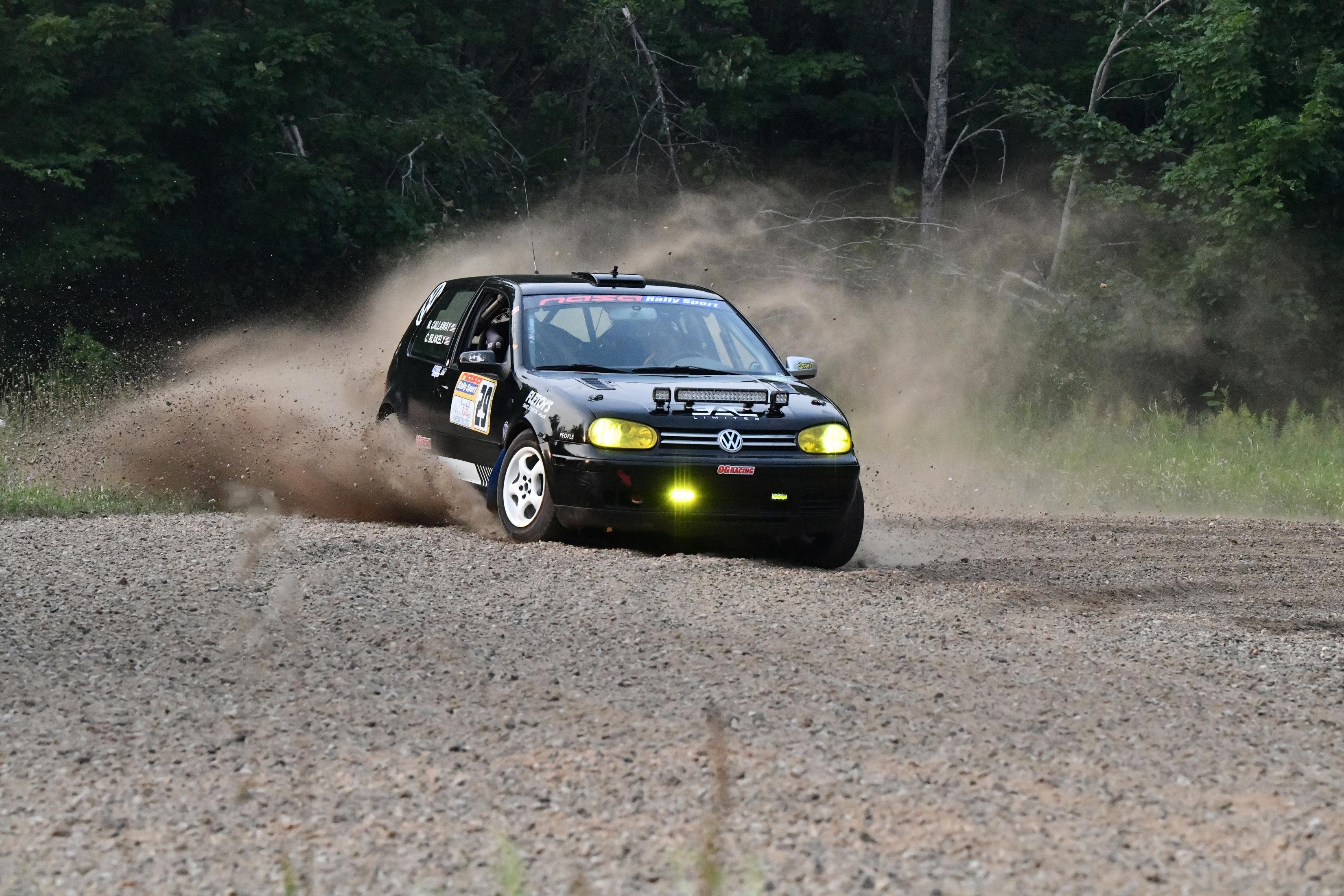


Welcome to the Pig Pen
The Pig Pen is where we trade off writing about someone we think is worth the ink Everybody’s busy, so we pass it around This time, I had the time, and I picked a friend who’s been on a tear Al King.
By Philip Hutchinson
I met Al King a few years back, tail-end of the corona stretch I’d just learned to snowboard, Taylor had taken me to a real hill a couple times, but this run was different we were meeting up with the legendary Old Man Kinger It was spring, sunny, and slushy my favorite kind of ride outside of perfect powder Al showed up dripping with style, talking boards, handing out good vibes, and before long we all clicked That day became the start of The Pig Pen a crew that never leaves anyone behind, always waits at the bottom, always teaching. Al’s the kind of guy who keeps a stash of giveaway gear in his trunk, just because. Al hits like a Detroit piston and moves like a Tahoe kid who never stopped chasing speed Drummer for The Strains, tour guide/Coowner for Charlevoix’s storybook Mushroom House tours, and a road-tested vet who’s opened for Blondie and ran with Gorevette he’s a Michigan transplant with California legs, a lineage that traces back to Destroy All Monsters, and a lifetime of rhythm that shows up everywhere from dive stages to slushy spring laps Part of the reason this magazine even exists is because of him those long drives to Mount Bohemia with him and Taylor were where the idea got lit They broke the mold when they made Al King This isn’t nostalgia It’s velocity
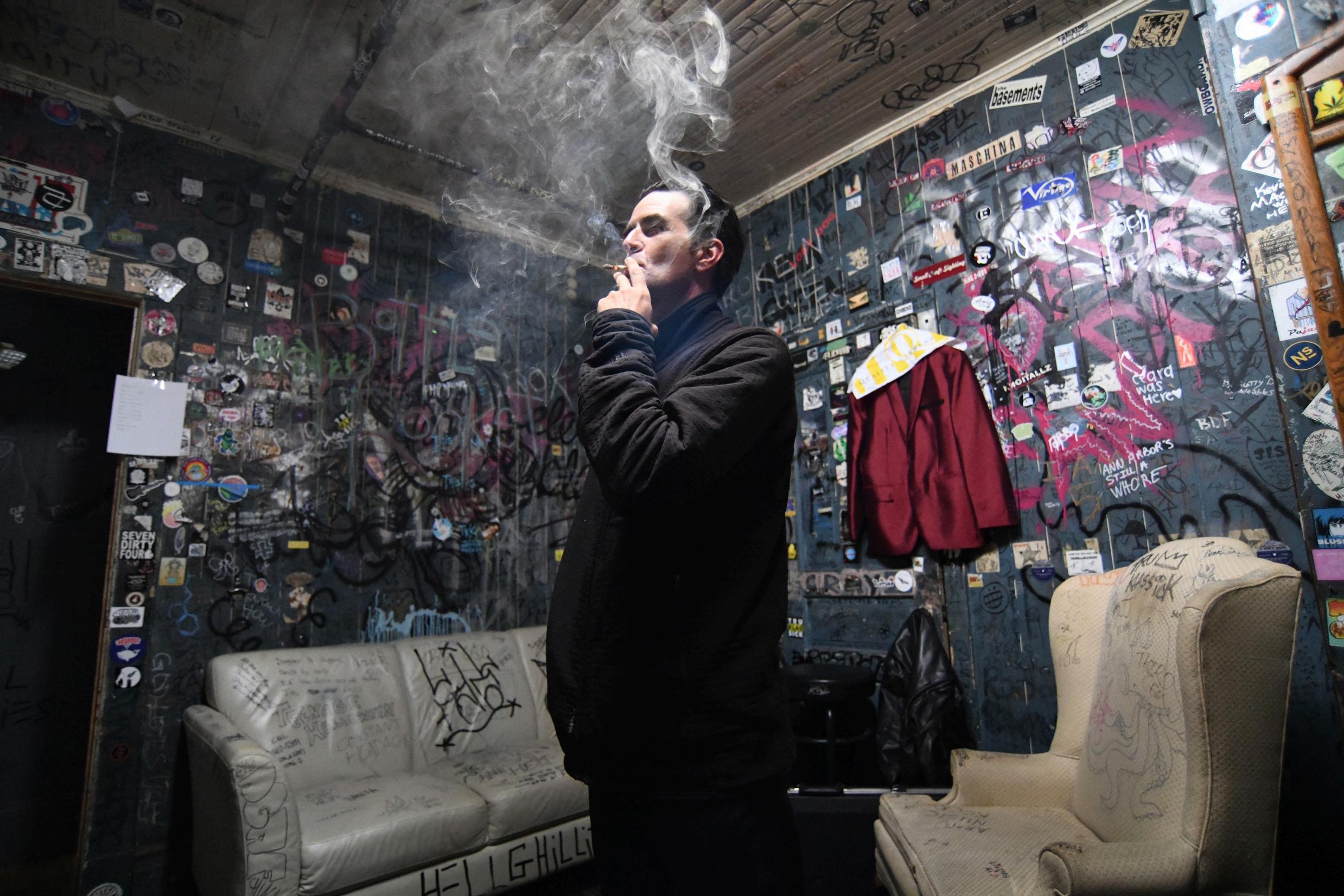
PHIL: Where’s the music start for you?
AL: My Uncle Rob King was in the band Destroy All Monsters with Ron Asheton I was taken to their rehearsal space at two years old and set behind the drum set for the first time Some say they were raised on the Stooges I was raised by the Stooges, and adjacent too

ROCK AND ROLL
PHIL: So drums from day one?
AL: By four, I had an Animal-from-the-Muppets kit Slept in the drum box for five months with my blanket and pillow Been playing ever since
PHIL: Let’s talk The Strains what’s the mission right now?
AL: We’re reestablishing as a touring band. I haven’t done real touring since Gorevette, but I said yes. We’re touring all over the Midwest and West Coast this fall
PHIL: What’s the best advice you ’ ve kept in your back pocket?
AL: Stay humble, always eager to learn, and improve Be a team player. If you ’ re good, you don’t need to show off. That’s from my Uncle Rob.
PHIL: What’s next on your calendar?
AL: Midwest and West Coast tours with The Strains, snowboard season with my buds Phil and Taylor, and keeping Mushroom House Tours running strong

PHIL: You’ve played LA and Michigan two completely different beasts
AL: Michigan’s music scene is more grassroots and authentic than LA Everyone moves to LA from somewhere like Michigan
PHIL: How’d you end up in with those Michigan music legends?
AL: Mostly through Chris “Jukebox” Taylor They already knew my family’s long music history in southeastern Michigan, and I was already a fan of their work Playing drums was the easy part
SNOW
PHIL: You’ve been on a lot of boards what’s under your feet right now, and why?
AL: I’ve been riding the Ride Warpig for a few seasons it handles every condition.
PHIL: Paint me the dream day where we at, who’s there, what’s it like?
AL: Dream day would be with my best riding bros Taylor, Phil (yourself), and Richie Welze Anywhere with any of them, we ’ re guaranteed to have a blast
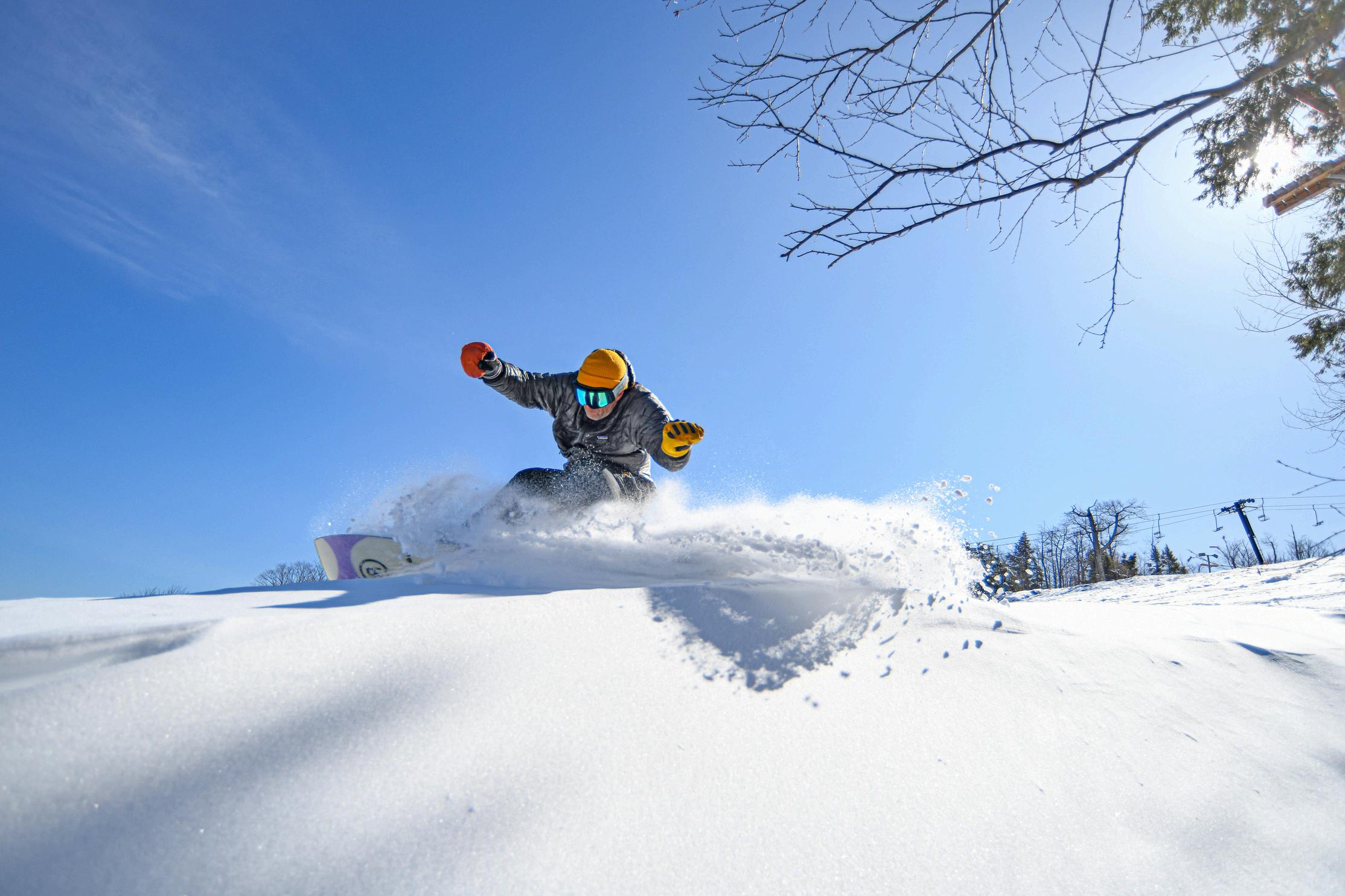

PHIL: You’ve told me that Warped Tour story before that’s pure hustle
AL: I saw an address on a NOFX record liner that said Lake Tahoe Agency I walked into the office of Rick Bondi with my band’s demo I think he was so impressed that I sleuthed him out that he booked us on the Warped Tour Punk rock and board sports went hand in hand back then 1996
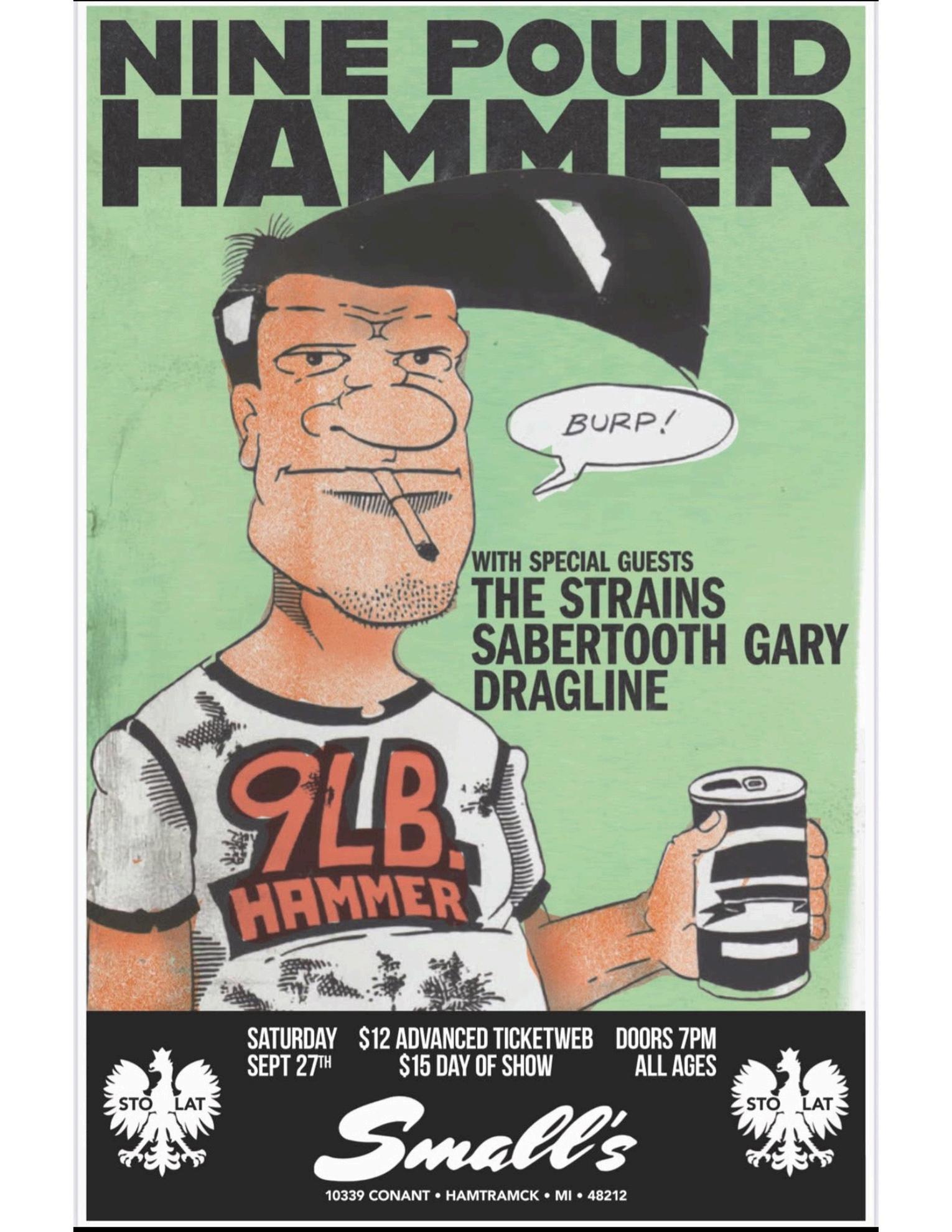
LORENZO’S JOURNEY TO DETROIT
PROLOGUE
BY VINCE BORBOLLA
The train hissed and groaned as it slid into Michigan Central Station, casting long shadows across the wide platforms of Detroit It was the summer of 1928, and I stepped down with Mini at my side, our three boys close behind, their eyes wide beneath woolen caps. The air smelled of coal and steel, laced with something new hope, perhaps, or just the raw breath of a city that never slowed down. A porter tipped his hat as we passed, and I nodded, clutching the small suitcase that held everything we dared to carry We waved down a cab and climbed in, the streets unfolding in quick jolts outside the window: redbrick factories, smokestacks like fingers scraping the clouds, men in coveralls walking with heavy boots and heavier steps “Corktown,” I told the driver He glanced back at me, then at Mini, then at the boys “Visiting family?” he asked “Friends,” I said “Old friends” The cab wheezed its way west, past boarded storefronts and brick homes where Irish, Polish, and Mexican flags flapped on porches We pulled up to a small house with a sloped roof and a garden that fought hard to grow between cracks. Filipe stood on the porch in his undershirt and suspenders, already waving before I opened the door. “Lorenzo!” he shouted. “You look like you walked here from Mexico!” I laughed and stepped into his arms He hugged me hard and clapped my back like I was still the young man he’d left behind in Veracruz
The next morning, we bought a modest home near 35th and Buchanan. Mini picked the one with a tree out front for shade, and I agreed without protest. It was more than we’d ever had, and still barely enough but it was ours. That afternoon, I went alone to the Ford Motor Company The factory loomed like a city within the city,

gates clanging, men moving in streams. I asked for the paint shop and waited under the hard gaze of a foreman who eventually pointed me toward a brick building. Inside, I met Mr. Mulligan, a stout man with red cheeks and the thick accent of the Irish
He didn’t speak Spanish, so he brought in a young translator who nodded politely at me “So you want to work in the paint shop,” Mulligan said through the translator “I like to know who I’m hiring Tell me your story” I hesitated “Sir,” I said in Spanish, “it is a long story.” The translator turned, and Mulligan grinned. “That’s okay,” he said. “I have plenty of time.” The translator looked back at me. “He’s very interested in your background.” I drew in a breath and nodded slowly. “Alright. It all starts back in Spain, where I was born…”

Chapter 1: Roots and Family Legacy

My life, like the land I came from, has known seasons of joy and seasons of trial It has been steered by fortune and foiled by fate, warmed by love and chilled by loss If there is meaning in recounting it, let it be found in the truth of the journey itself I was born on the 8th of September, 1898, in our family home in Villanueva de Colombres, a quiet village nestled in the emerald hills of Asturias, Spain The house bore the scent of old wood and stone, and the sea was never far from the wind My parents Lorenzo Borbolla García and Concepción Sánchez Estrada were both born in Colombres as well Their blood ran deep in that soil. I bore my father's name. He was a man of strength and stillness, the second son of six children three boys and three girls born into a family of means. Though he came from wealth, it was not luxury that defined him, but a relentless sense of responsibility. Whatever needed fixing be it roof, clock, or neighbor he set his hands to it without complaint At twenty-one, my father answered Spain’s call to arms and served in the Army for eight long years, rising through the ranks to become a Captain of Mountain Artillery When he finally returned home, the uniform came off, but the discipline remained He channeled that discipline into work, becoming a civil engineer and mastering the trades most men feared to attempt He was, by then, a bachelor of some reputation handsome, articulate, from a respected family It was no surprise that he drew the attention of a wealthy widow Her first husband had left her
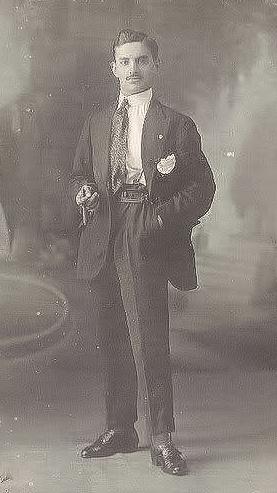
an inheritance so vast she scarcely knew its borders She had a son, and my father raised the boy as if he were his own. A curious detail, that. Life, as it happens, would later ask the same of me. In those days, the Carlist Wars cast a long shadow across Spain. My grandmother, wise and willful, was determined that her son would not be claimed by the conflict She arranged his passage to Cuba, where kin awaited him in Havana Thus he departed, not as a soldier, but as a son spared Years passed how many, I cannot say with certainty and when he returned to Villanueva, the widow was gone In the house they had shared remained a young maid, honest and graceful in her manner My father, moved by affection and perhaps by the quiet strength she carried, built a new home and gave the old one to his stepson along with all the money and property that had belonged to the boy’s mother It was a generous gesture, and one that spoke to the sort of man he was Then, in the humble church at the heart of our village, he took that quiet, faithful woman as his wife lifting her not only into his home, but into his heart, with the solemn promise that their life together would be built not on wealth, but on devotion. She was to become my mother a woman whose gentleness was never mistaken for weakness, and whose hands bore the mark of labor without ever losing their warmth. Her voice was soft, her presence steady

There was a grace in her silences, as though she understood things before they needed to be spoken But Providence, in its mystery, did not allow me long by her side She was taken early, and the ache left in her place became the quiet companion of my days It was then young as I was that sorrow made its first true claim upon me And from that moment, my journey truly began
“THE DROP”
“CREATING CHANGE THROUGH MUSIC”
By Yorg
Jennifer Hudson is the founder, CEO, and creative heart behind Sounds of the Zoo a free, seven-day multicultural music festival lighting up downtown Kalamazoo each September Since its debut in 2022, the festival has blossomed into a year‐round movement rooted in its mission of “Creating Change Through Music” Now entering its fourth year (September22–28,2025), the festival spreads across eight vibrant venues, featuring 50 powerhouse performances all completely free to the community
What started as a bold, grassroots idea has become a city-wide celebration of unity, connection, and culture It features not only stages but also second-line parades (led by Great Lakes Brass), documentary premieres (like Kalamazoo Gals), workshops, cypher competitions, and busking stations turning every corner of Kalamazoo into a creative pulse
Q&A
What inspired you to launch this music festival?
“I was inspired to launch Sounds of the Zoo because art has been a part of my life since I was a child, and music has always felt like the catalyst that brings people together As an artist myself, I have a deep passion for creating artistdriven experiences that shine a light on creativity and expression Over the years, I’ve seen how music can cross boundaries and build community, and I wanted to create a space where artists from all backgrounds could be celebrated and where audiences could experience that same connection Sounds of the Zoo grew out of that vision to bring art to the forefront, uplift musicians, and unite people through the shared power of music.”

How do you curate the lineup for the festival each year?
“Curating the lineup each year isn’t a straight-line process it’s really a blend of a lot of different elements. I work with so many genres, but only have a limited number of slots, so I start with a theme for the year and sometimes I’m looking for something very specific to fit that I’m always scouting music all year long, and I’ve built a lot of relationships with bands over the last 10 years of being involved in Michigan’s music scene and booking shows myself
It really comes down to timing, the right place, the budget, and how it all fits into the bigger picture of the festival My goal is to make sure every artist feels valued and is showcased in a way that’s successful for them, no matter where they are in the lineup I put a lot of care into the curation that’s really the heart and soul of this festival I want it to be diverse, and I want people to experience music they might not have ever encountered before, especially in these unique venues That’s what makes Sounds of the What challenges do you face in organizing a large-scale event?
“I’d say the biggest challenge is that Sounds of the Zoo is a free event, which means raising the money to make it happen really falls on me and that’s no small task I’ve always been involved in event planning, from my years working in restaurants to theater and performing, so I’m comfortable with a lot of moving parts But with a festival like this, the second big challenge is really the logistics behind the scenes the operational management, coordinating collaborations, and just keeping all the pieces moving together I like to say it feels a bit like building the plane while I’m flying it And then, because this festival happens right in the city, there are also all the municipal logistics to navigate permits, working with local government, and making sure everything runs smoothly. It can definitely be daunting, but it’s worth it to create something that brings people together in such a powerful way. ”
What is your vision for the future of the festival?
How has the festival evolved since its inception?
“The festival has definitely grown since it started. Sounds of the Zoo has always been very grassroots, organic, and mission-based, and each year it seems to gain a little more traction and momentum. We’ve been improving our website and social media presence, which has helped raise more awareness, and I’ve also been building a bigger team to support the vision
Every year, we ’ re able to add new elements like special events within the festival that give people more ways to connect and experience the music It’s still rooted in the same mission it started with, but it’s evolving, getting stronger, and reaching more people each year ”
What measures do you take to ensure sustainability at the festival?
“Sustainability is one of the pillars of Sounds of the Zoo, and we ’ re really committed to making progress in that area We’ve been working closely with the City of Kalamazoo to find ways to reduce our environmental impact, and while it’s definitely still a work in progress, it’s something we take seriously. That means being mindful about things like waste reduction, recycling, and energy use, as well as encouraging our partners, vendors, and attendees to join us in those efforts. Each year we look for new ways to improve, because we want the festival to not only celebrate music and community, but also contribute to a healthier, more sustainable future for Kalamazoo
What has been the most memorable moment in the festival's history?
That’s a tough one! I’m in my fourth year, and with over 50 bands involved, there are so many moving parts. Honestly, the most memorable part for me is just watching the festival unfold seeing different venues come alive each day and watching people enjoy themselves There’s something really special about seeing the spark catch in the community, knowing that what I’m creating is more than music it’s creating real change
My vision is to make this festival a platform and touchstone for creating a new music industry in Michigan using it as a catalyst for people to connect, collaborate, and grow the Midwest music scene. Kalamazoo’s central location gives us a great advantage, and I see the festival evolving with more venues, more bands, and even broader community participation throughout the week I’m inspired by other successful free festivals, like Mile of Music in Appleton, Wisconsin, which has been around for 12 years Ultimately, I want the festival to grow organically while staying true to our core pillars: creating change through music, celebrating diversity and inclusion, and promoting awareness around sustainability and mental health At its heart, it’s all about the music
MEET THE CREW BEHIND STOKE
We’re not a company we ’ re a crew. A handful of people doing what we love, chasing stories that matter to us, and building something that feels honest.
Philip Hutchinson
Founder, Publisher & Editor-in-Chief
Photographer from Michigan. Founder of Northern Territory Imaging. I started Stoke because I felt like it needed to exist something that captures the energy we live in Snowboarding, motorsports, music, art, adrenaline, and storytelling all under one roof. It’s not about trends. It’s about people doing real things in a place we care about. I’m just doing my best to document it the way it deserves to be seen.
Yorg Chief Hype Man & Founder of The Drop Detroit music promoter and longtime connector Yorg runs The Drop, brings in the voices that matter, and keeps the conversation honest and loud. He knows who’s next and who’s real and makes sure they get seen
Taylor Jepsen
Rider & Creative Contributor
I’ve known Taylor since he was a kid. Like a nephew to me. He’s the reason I got into snowboarding in the first place Always down to ride, always pushing things forward, and always showing up when it matters
Kenny “The Missile” Forton
Snowboarder & Cultural Vibe Manager
Kenny brings the heat Fast on a board, louder in the lot, and the kind of energy that keeps everything fun even when it’s chaos He’s the vibe guy pure stoke, start to finish.
Al King
Creative Contributor & Cultural Guide
Snowboarder, drummer, and co-founder of the Charlevoix Mushroom Tour. Al’s got a sixth sense for what’s coming in the snowboard world. Nobody’s more tapped in he’s part of the reason the Pigpen even works
The Mission
Stoke is about the people who bring fire to this state whether they’re carving lines in the Keweenaw, dropping sets in packed clubs, tuning rally cars in a pole barn, or sewing art into clothing that carries generations. It’s for the ones who move differently and think louder It’s for the creators, the makers, and the brave
A Note on the Magazine
There’s no formula. Each issue changes shape. Some regulars will be there The Drop, Welcome to the Pigpen but nothing is guaranteed The stories shift with the season, the inspiration, and the people who show up. Stoke is a platform for creatives in the adrenaline and art worlds who are pushing what’s possible and doing it in Michigan.
The Bigger Picture
We’re just the core. The truth is, Stoke only happens because of the whole crew around us photographers, riders, creatives, people who give their time and talent because they believe in the vision We’re all part of the same spine no one ’ s more important than anyone else.
additional Photo credit Emily Velchansky
